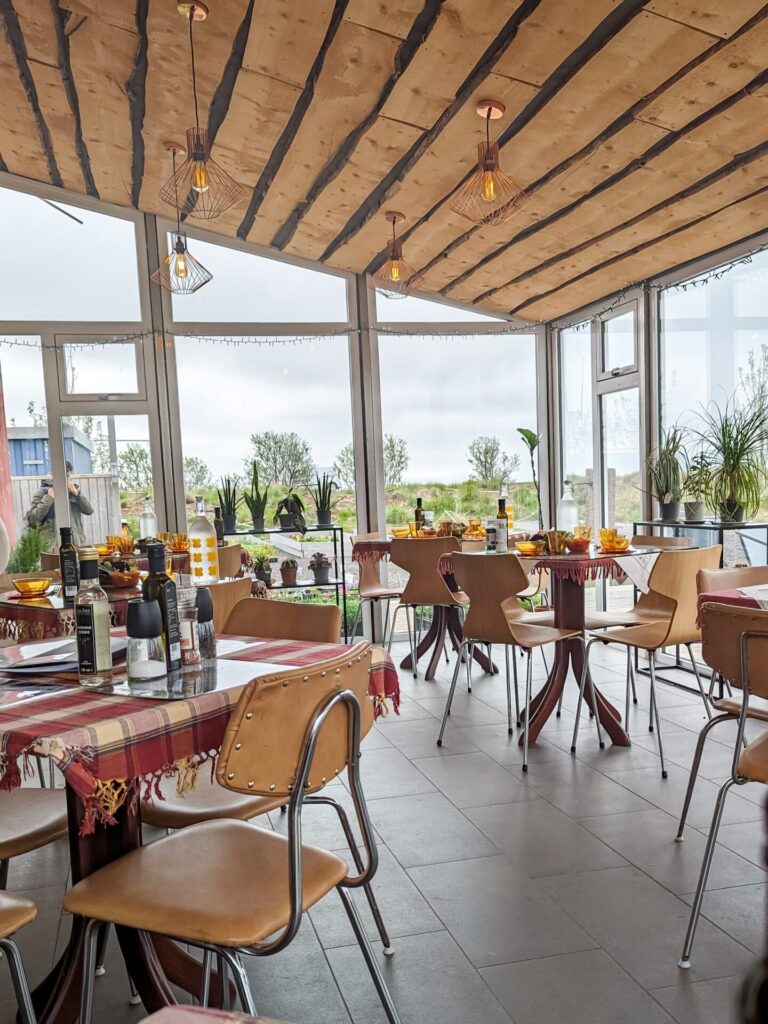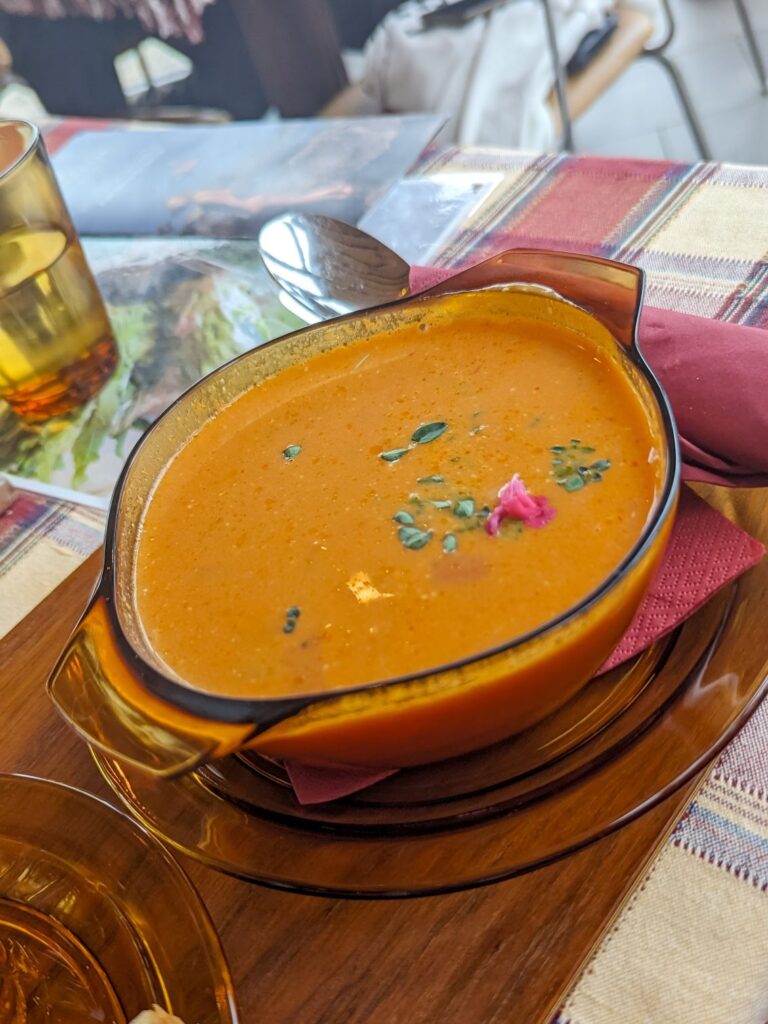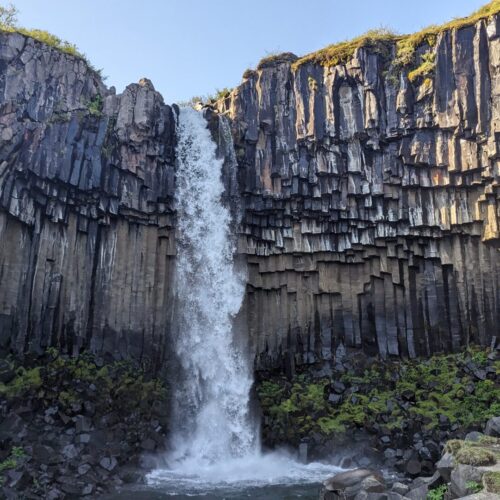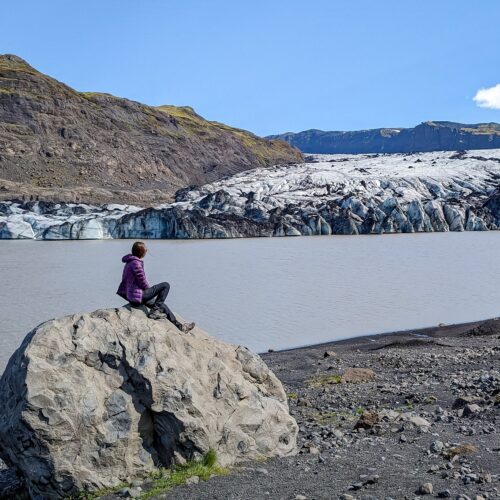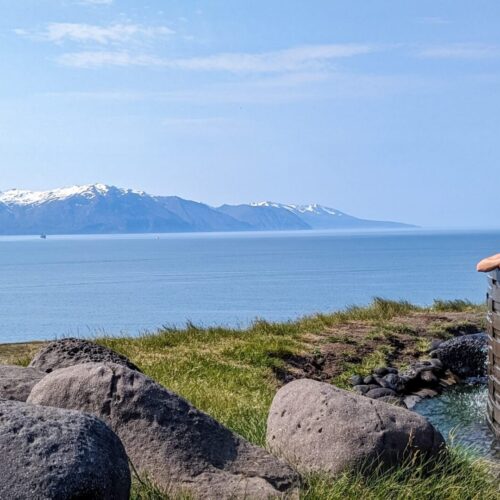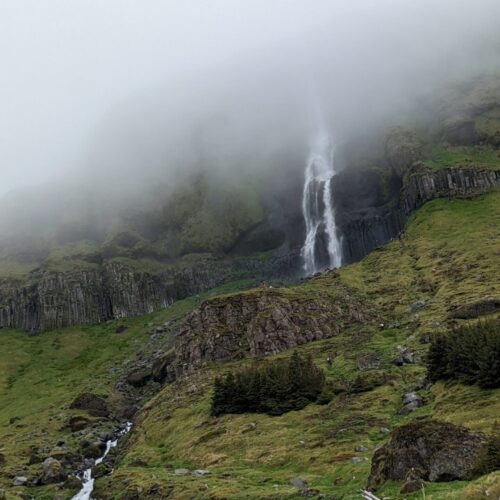Iceland is arguably one of the most beautiful countries in the world. It is an outdoor lover’s paradise, with endless hiking opportunities and gorgeous scenic locations to visit.
While you can easily spend weeks exploring everywhere in Iceland, you can also visit for a short stopover and still see much of the country’s diverse natural wonders. Many of Iceland’s most visited and most beautiful places are only a couple of hours’ drive from the airport!
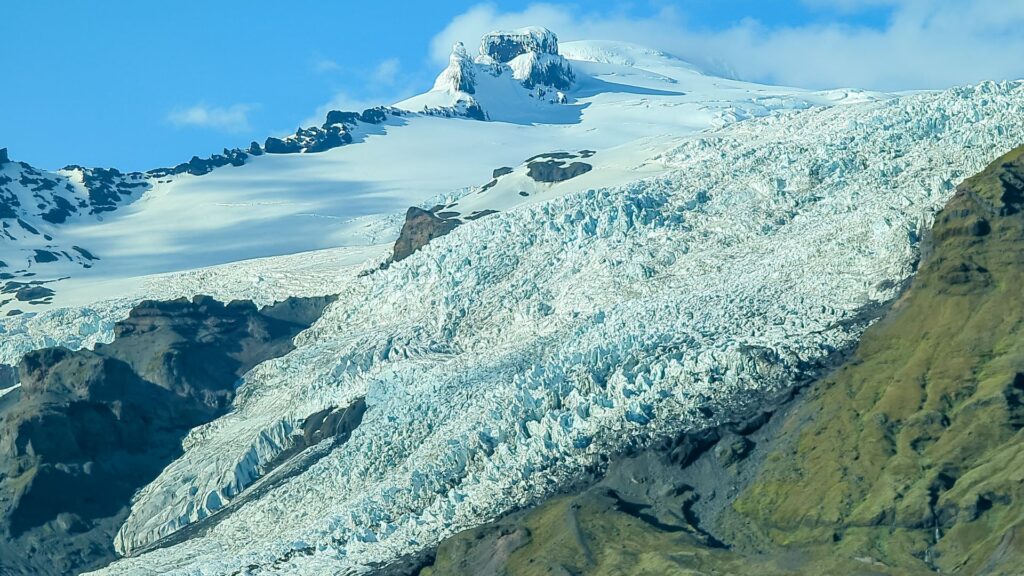

Language: Icelandic & English
Currency: Icelandic Króna (ISK).
Major Airport:
Keflavík International Airport (KEF)
Best Time To Visit:
Best Weather: June to August
Northern Lights: September to March
What can you expect on an Iceland trip?
Expect to rent a car and do some driving. If you are trying to see as much as possible in a short period of time, you will likely drive anywhere from 3 to 6 hours per day, with many stops along the way, sometimes only a few minutes apart. There is a lot of sightseeing to do; you can really jam-pack your three days to make the absolute most out of your time in Iceland!
Don’t Forget to Check Out My Tips for Traveling Iceland
Helpful Tips for Traveling Iceland
Planning your Iceland trip
May to September is the optimal time to visit Iceland if you want the best weather possible. However, for a short three-day trip, most everything should be available year-round! August is the busiest time to visit Iceland.
The most important thing about planning this trip is booking well in advance. Iceland is a small country, and while it is great at catering to tourists, there are only so many accommodations along the way. If you do not book early enough, you risk having nowhere to stay or paying exorbitant prices. The same goes for rental cars. If you are particular about a specific type of car, book early!
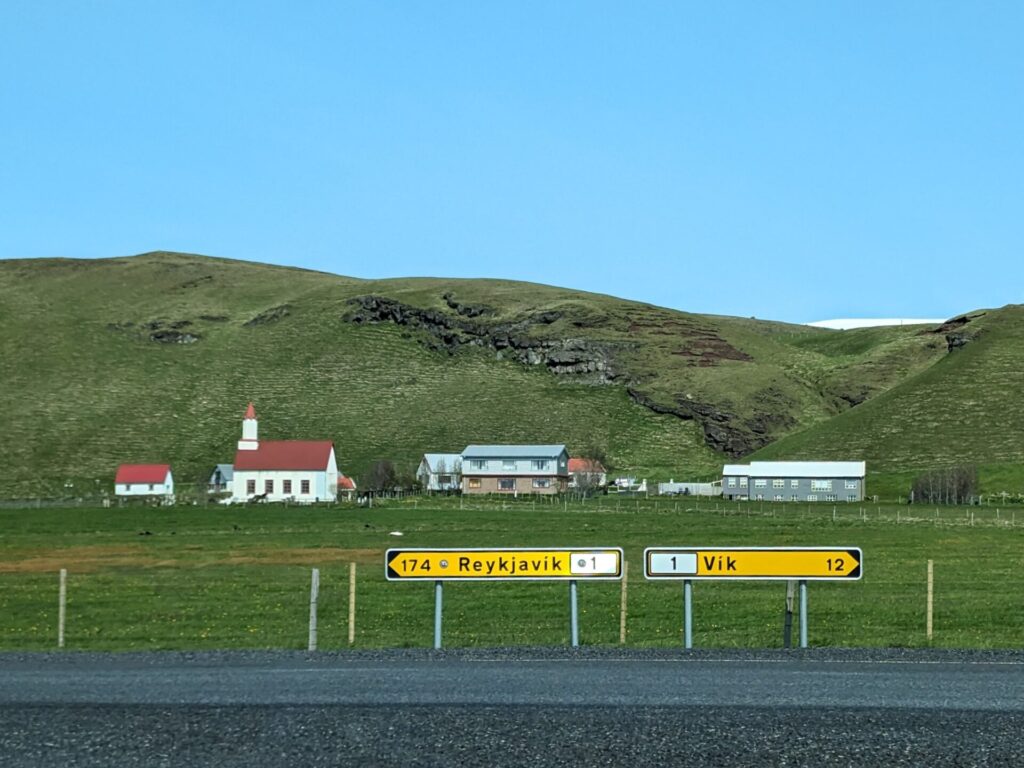
Driving in Iceland
Route 1 and other main roads around Iceland are paved and well-maintained. They are often two lanes with the occasional one-lane bridge or tunnel. However, leaving these main roads makes you more likely to run into unpaved narrow roads. If you stick to the more trafficked areas, which is likely on a shorter trip, you won’t encounter too many bumpy dirt roads.
Stay alert and cautious while driving. There are speed cameras throughout the country and the aforementioned one-lane bridges and tunnels. Proceed with caution in these situations and pull off to the side or wait for oncoming traffic if necessary.
Don’t Forget to Download These Apps for Your Iceland Trip –
Must-Have Apps for Your Iceland Road Trip
Renting a Car
Assuming you are not driving into the highland on your short stop in Iceland, you should be able to rent a simple 2WD vehicle, especially in the summer.
If you expect to spend some time in the highlands (the center of the country), you will need a 4WD vehicle, as these roads can be rough and include river crossings. However, none of that will be covered in this itinerary.
IMPORTANT: Make sure you reserve an automatic car if you can’t drive a manual car
We rented our vehicle from Lava Car Rental. Overall, we had a decent experience. It wasn’t perfect—the check engine light was on, and we had to call to ask about it. The airport pickup was also a huge mess; the directions were unclear, and the pickup van was far too small for the number of people waiting. But other than those two things, it was a good experience. Booking the car online was super straightforward, and pick-up/drop-off was easy.
3-Day Itinerary – perfect for a stopover!
There are a couple of ways to approach a 3-day itinerary in Iceland. No matter which you choose, you will see so many amazing locations and get a taste of all that Iceland offers in a short time. This itinerary is jam-packed and assumes you arrive early on day 1 and leave late on day 3!
Day 1: Golden Circle
Day 2: South Coast or Snæfellsnes Peninsula
Day 3: Reykjavik and Reykjanes Peninsula
Depending on what you decide to do on day two will determine which direction you should drive through the Golden Circle. Day two will be busy no matter which direction you go, so be prepared to start the day early and keep moving so you can pack in as much as possible!
If you happen to leave on Day 4 instead of Day 3, giving you 3 FULL days in the country, you can visit both the South Coast and Snæfellsnes Peninsula or spend more time on the South Coast.
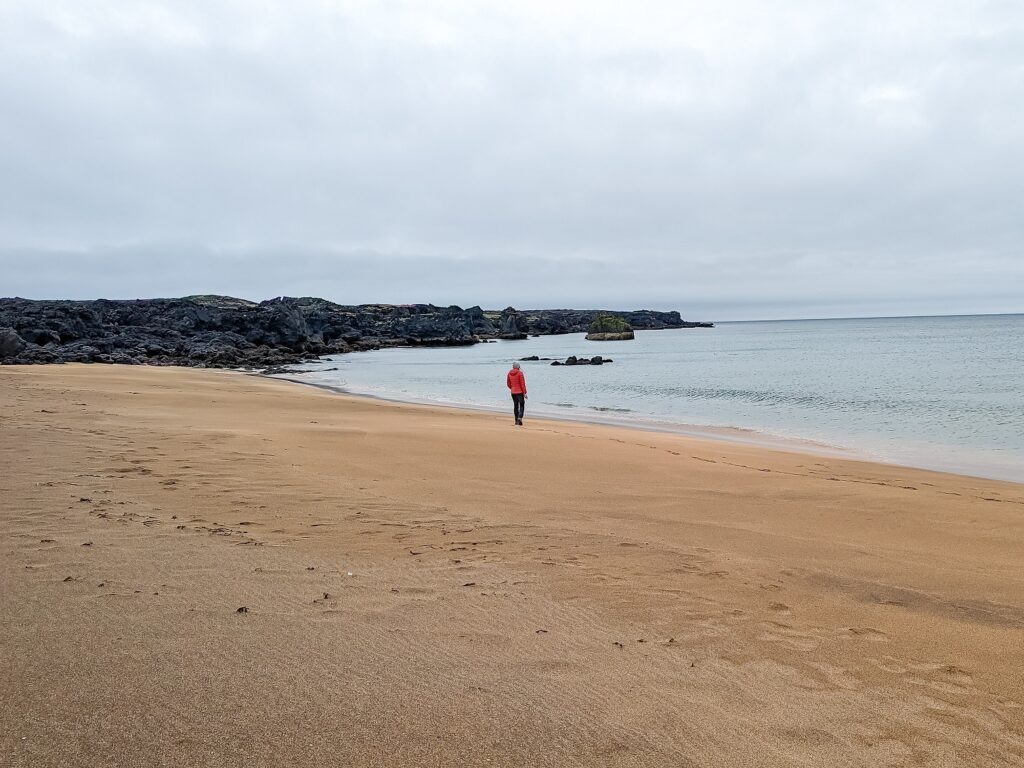
Day 1: Arrival & The Golden Circle
Driving Time: Approximately 3.8 hours | Ending Location: Reykjavik or Hella
Welcome to Iceland! You’ve just landed at Keflavik International Airport, which is located on the southern peninsula (Reykjanes Peninsula). After you’ve passed through immigration, follow the directions to your rental car. You will either head straight to the rental car pick-up location or to a passenger pickup area to drive to your rental car.
The Golden Circle is a 190-mile (300km) route that passes by 3 of Iceland’s most popular attractions, Þingvellir National Park, Geysir, and Gullfoss. Beyond these three official stops, there are so many more amazing places along the route! The Golden Circle is a great day trip and is included in most itineraries, whether they are long or short.
If you plan to go to the South Coast on Day 2, you will want to drive the Golden Circle clockwise and end your day in Hella. If you plan to visit Snaefellsnes Peninsula on Day 2, you should drive the Golden Circle counterclockwise and end your day in Reykjavik.

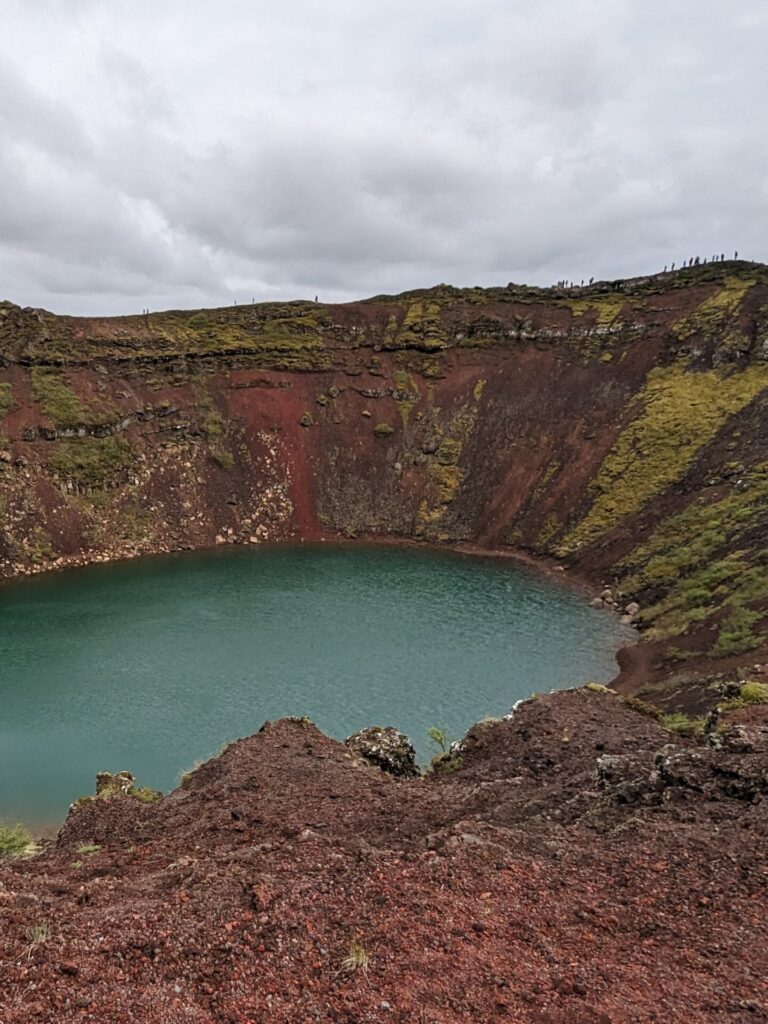
Places to see in the Golden Circle
Þingvellir National Park
Þingvellir National Park is not only of geological significance but also of cultural significance. The name, which translates to “Parliament Plains,” is the location of the world’s oldest parliament, established in 930 AD! Þingvellir National Park is also the location of the rift between the North American and Eurasian tectonic plates, creating a dramatic landscape and natural lake!
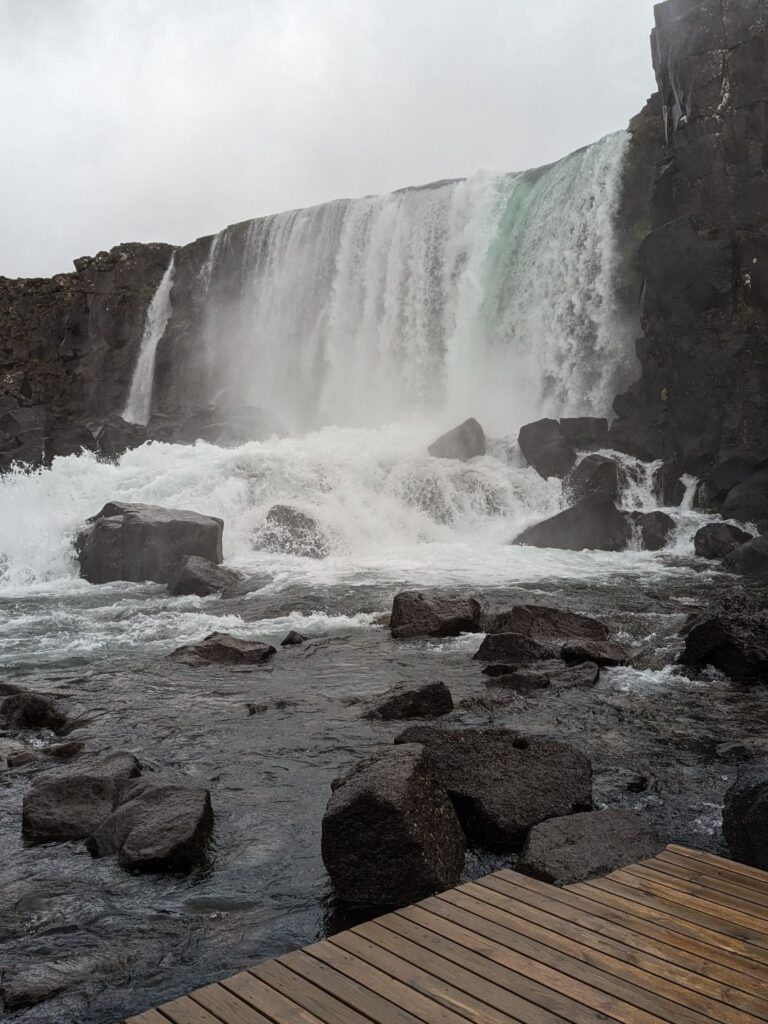
There is a 1,000 ISK parking fee, which goes towards maintaining the park. Several hiking trails within the park offer stunning views of waterfalls, geological formations, and the lake. You can also head to the Silfra Fissure to snorkel between the tectonic plates!
Make sure you stop at the Hrafnagjá Observation Deck, where you will get a great view of the tectonic fissures and lake.
Geysir
Geysir is one of the most famous geothermal areas in the world and is the namesake for all geysers! The area around Geysir features hot springs, bubbling mud pools, and fumaroles. While Geysir is currently a dormant geyser, Strokkur is an active geyser at the same location! You can watch Srokkur blast boiling water into the air every 5 to 10 minutes.
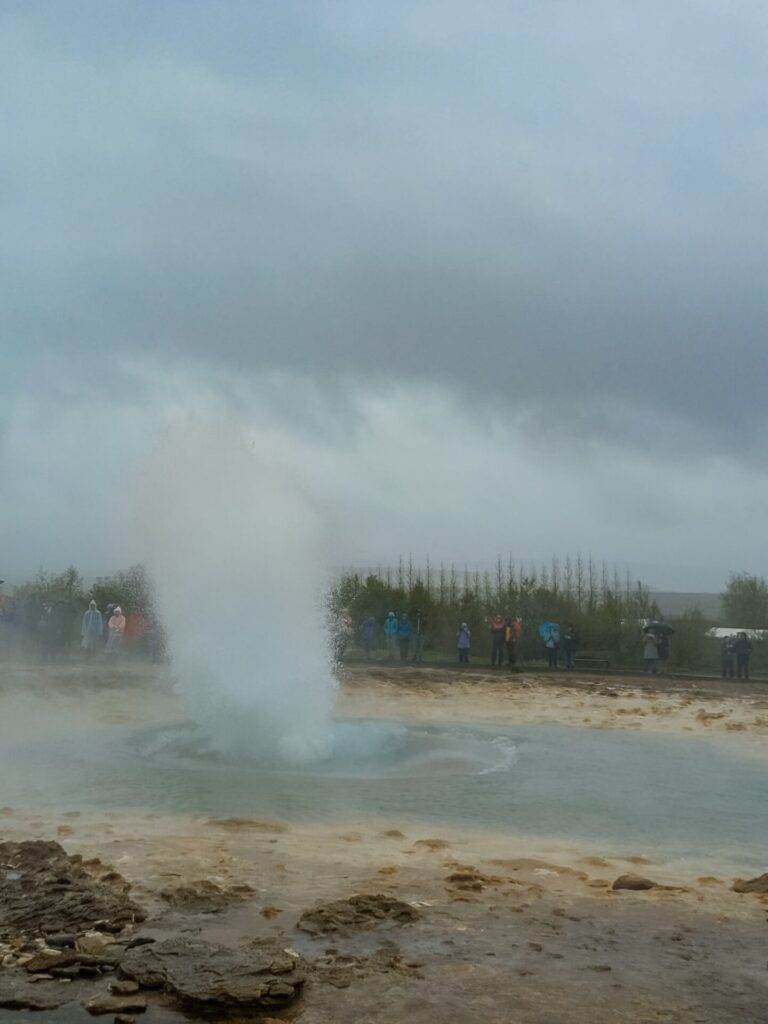
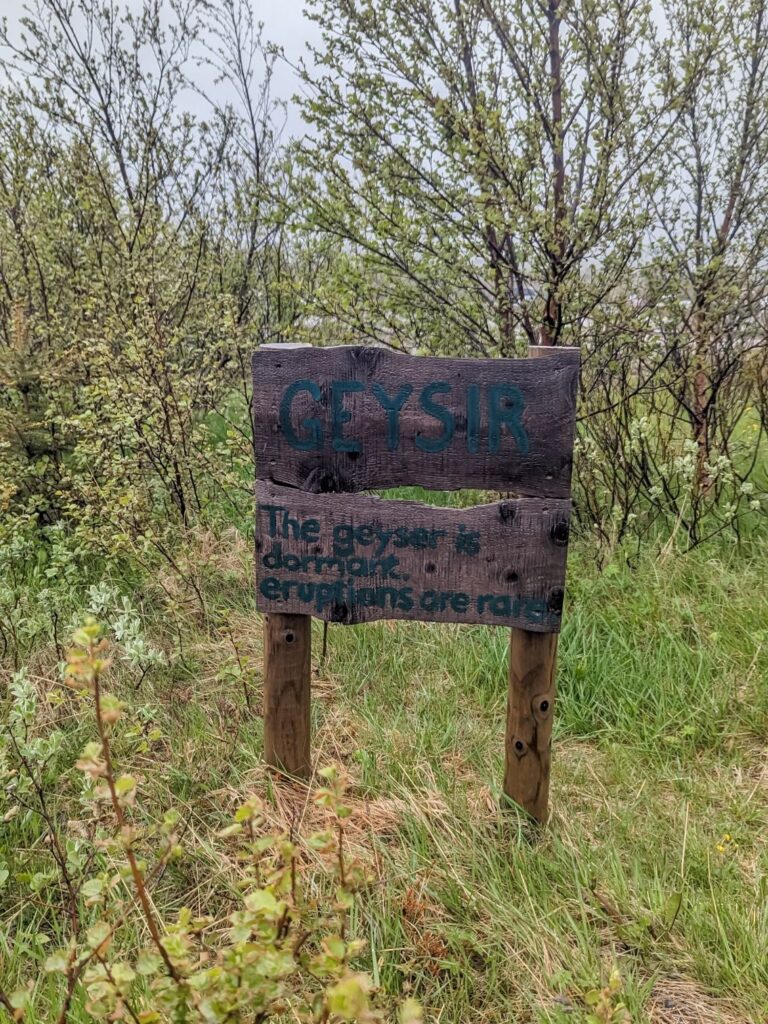
Gullfoss
Gullfoss, aka Golden Falls, is one of Iceland’s most well-known and iconic waterfalls. This is a huge, powerful two-level waterfall with multiple viewpoints. The waterfall has two tiers and plunges 105 feet (32 meters) into a canyon. This location also has a huge parking area and visitor facilities, such as restrooms and a cafe.
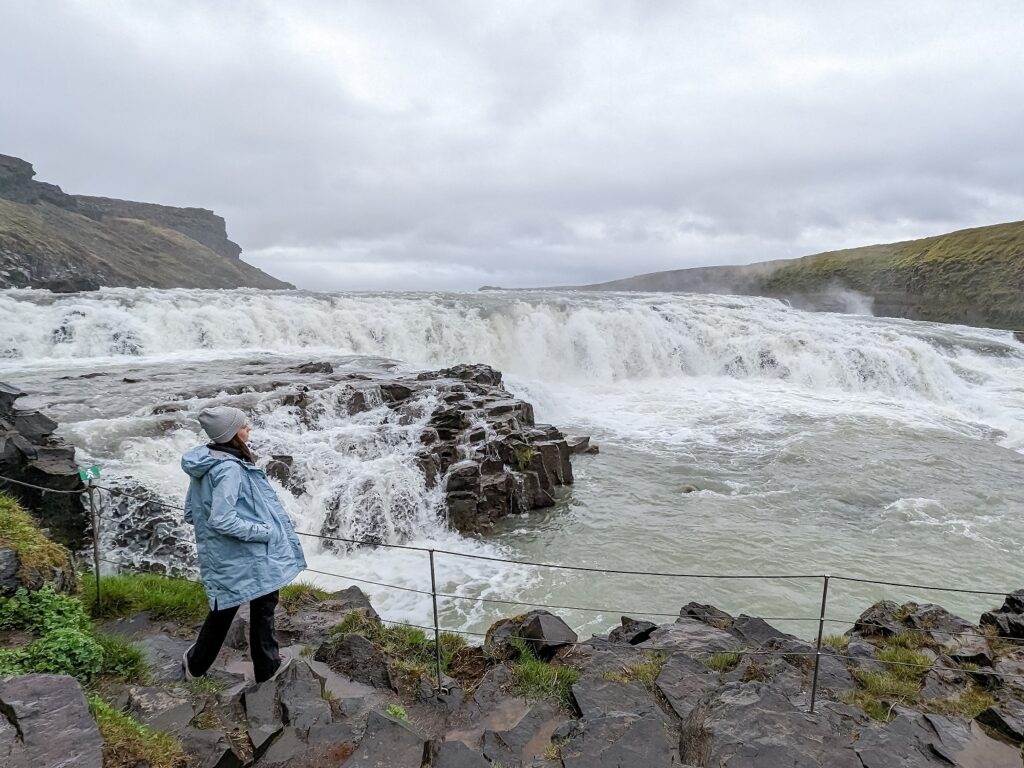
Laugarvatn Fontana
Laugarvatn Fontana is a geothermal spa located on the Laugarvatn lake. Visitors can relax in the mineral-rich geothermal pools, steam rooms, and saunas or learn about traditional Icelandic baking techniques. They can also take a guided tour to experience bread baked in the hot sand along the lake and sample it with some provided toppings!
Brúarfoss
Between the town of Laugarvatn and Geysir, there is a hike along the Brúará Trail. The hike is approximately 4.4 miles (7km) out and back and takes you to Brúarfoss, often called Iceland’s Bluest Waterfall. If you don’t want to hike to see Brúarfoss, there is now a parking lot at a significantly closer location that requires a much shorter walk; however, there is a 750 ISK parking fee.
Secret Lagoon/Hrunalaug Hot Spring
The Secret Lagoon is another Geothermal Pool located in the Golden Circle. It’s one of Iceland’s oldest natural geothermal pools. This pool is less crowded than other more popular locations around Iceland, making it a great option for avoiding the crowds!
Also, in the same area fed by the same geothermal hot spot is Hrunalaug Hot Spring. Hrunalaug is a small hidden gem pool run on a local farm. The pool can only fit a few people, but it’s a unique experience. Due to the nature of the pool, there are fewer amenities here.
Kerið Crater
Kerið (Kerith) Crater is a volcanic crater lake along the southeast of the Golden Circle. It is approximately 890 feet (270 meters) tall and was formed about 3000 years ago! Unlike many volcanic craters, this crater was not formed from an explosion but from emptying the manga chamber underneath.
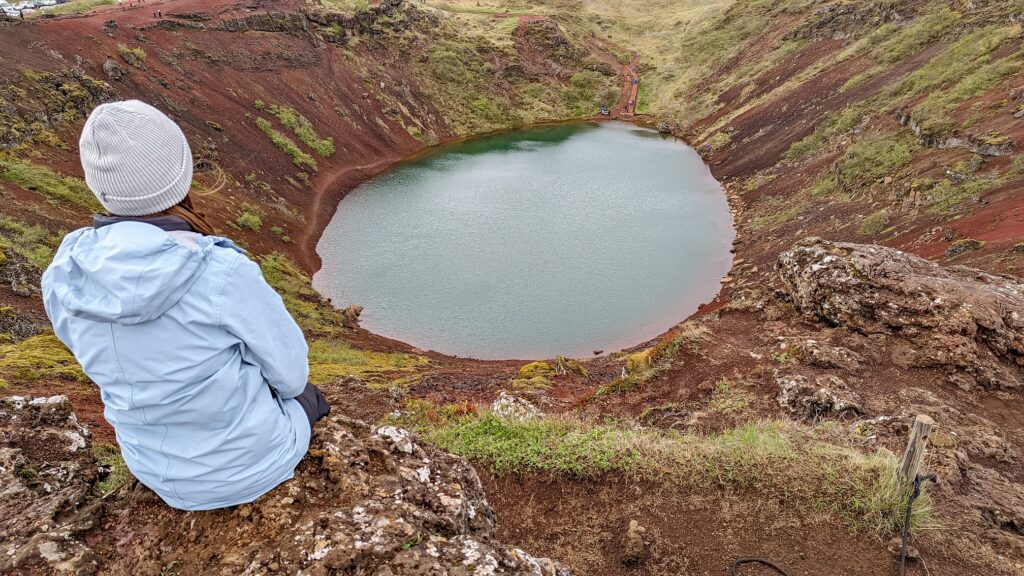
The lake in this crater can range from deep blue to bright green. There is a 400 ISK fee to visit the crater, and parking is a bit of a nightmare, but walking to the crater’s perimeter and down into the crater to the lake is worth it.
Reykjadalur Hot Spring
Reykjadalur Hot Spring is a natural hot spring river accessed via a 4.9-mile (7.9km) hike through the scenic Reykjadalur Valley. The river has areas of different temperatures, so visitors can pick a section that suits their preferences! There are no changing facilities, but a wooden wall near the river can be used as a changing area.
Day 2: The South Coast or Snæfellsnes Peninsula
Day 2 will be very busy; start your day as early as possible to fit as much as possible into your one full day. Due to the short trip, you won’t be able to go to both locations but pick whichever catches your eye. The South Coast is the more common place to visit, but the Snæfellsnes Peninsula has just as many cool stops and is a bit quieter.
Option 1: The South Coast
Driving Time: Maximum 5.3 hours | Ending Location: Reykjavik
Iceland’s South Coast is known for its stunning natural beauty. It’s home to some of the country’s most famous waterfalls, black beaches, and glaciers. There is so much to do on the South Coast, and spending multiple days exploring the area is easy.
For a day on the South Coast, you should make your way about half to three-quarters of the way along the coast and then turn around to head back to Reykjavik. Split up your stops so you have some locations to visit going both directions! If you are feeling adventurous and want to skip Reykjavik, you could spend a night on the south coast and head back along the coast to the Airport on Day 3. The South Coast follows Route 1.
Places to see on the South Coast
Seljalandsfoss and Gljufrabui
Seljalandsfoss is a 200-foot waterfall surrounded by mossy cliffs. The parking lot is a short distance from the falls, and walking up to them is very easy! Make sure you are wearing rain gear, as you will get wet walking behind them!
Follow the path north of Seljalandsfoss to visit Gljufrabui. The waterfall hidden in a canyon is only a 10-minute walk away. If you intend to climb inside for the best view, make sure you wear your full waterproof gear, especially waterproof boots.
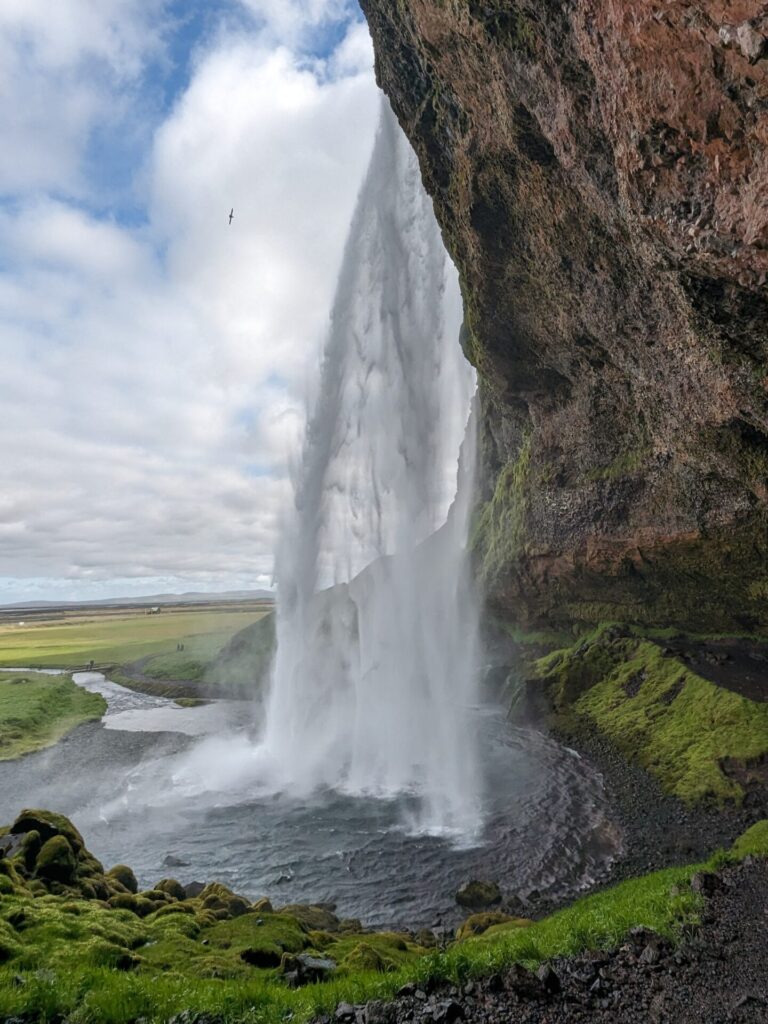
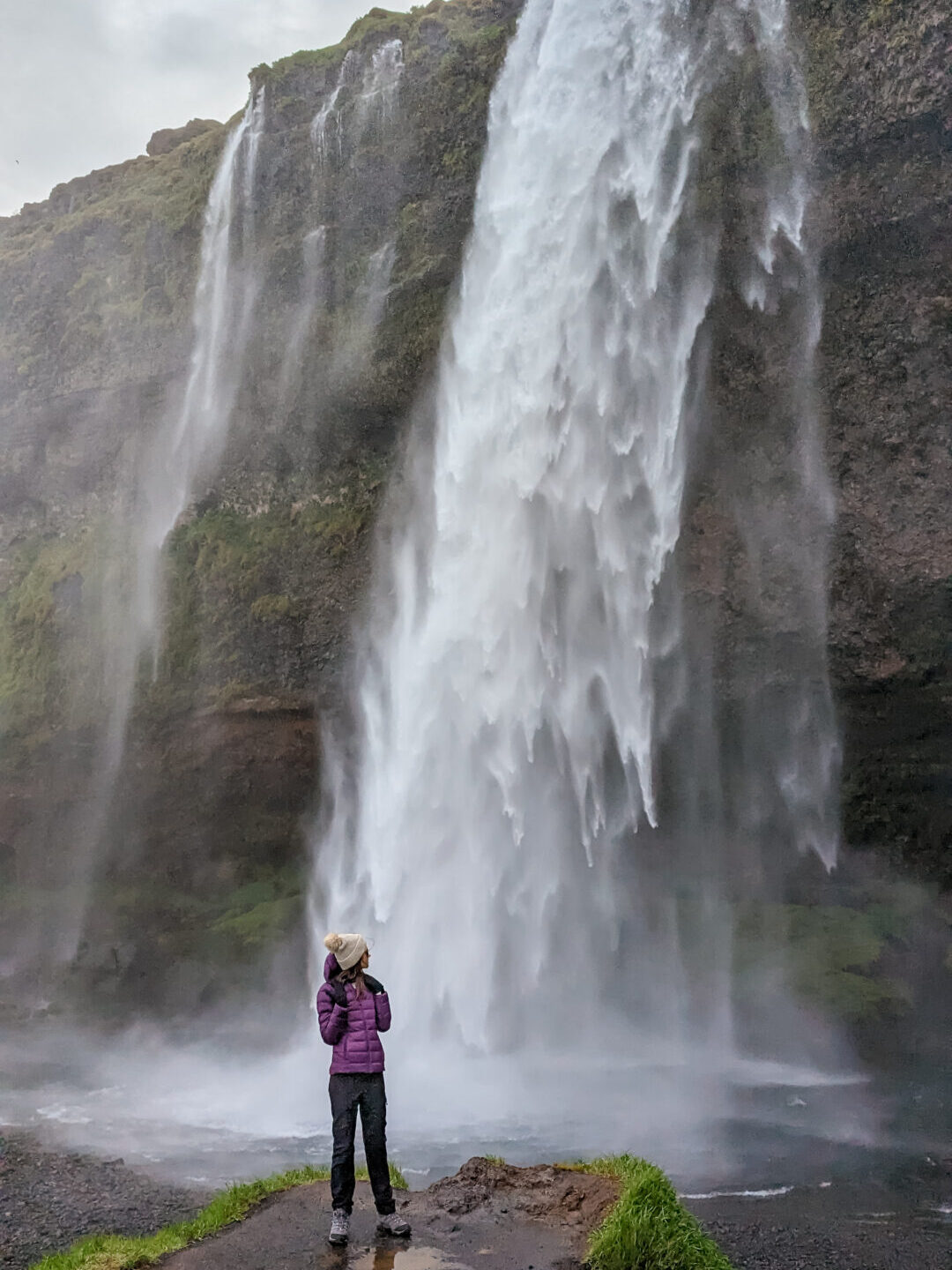
Skógafoss
Another very popular and famous waterfall. You can get very close to this one and even get a bird’s-eye view! The parking lot is quite large, and the waterfall is only a short walk away. If you want to see more waterfalls, climb the stairs to the right of Skógafoss and continue down Waterfall Way to see a few more falls along the Skógá River. The trail is about 5 miles (8km) total, so hike as much or as little as you want!
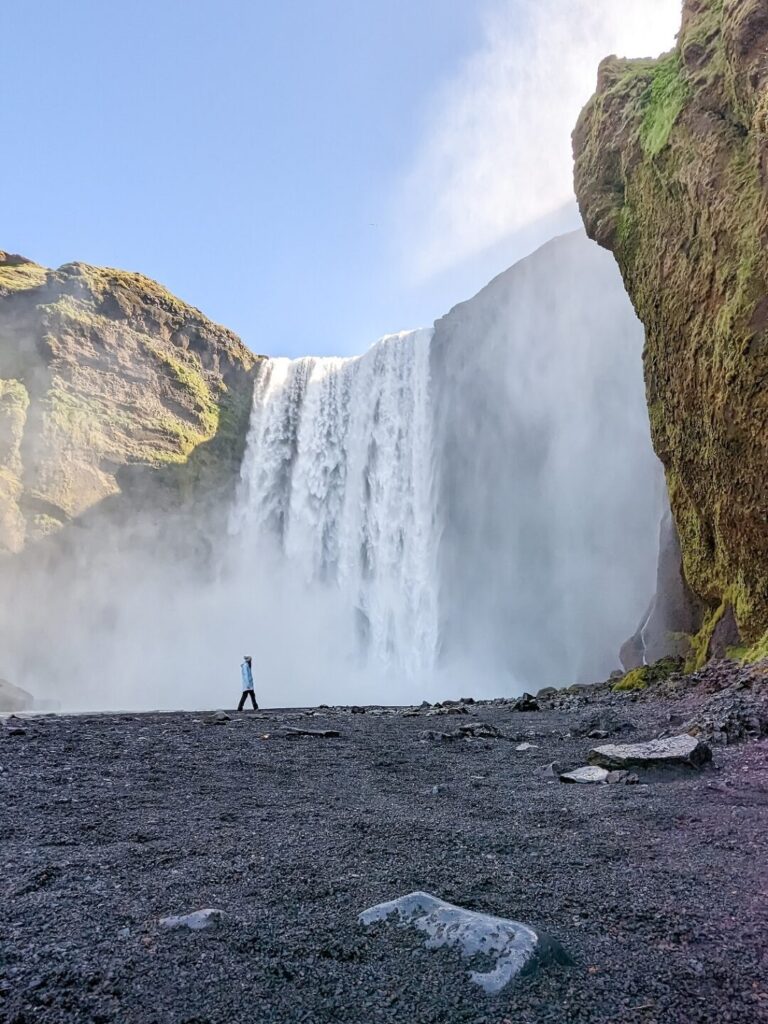
Kvernufoss
Immediately east of Skógafoss is Kvernufoss. A significantly quieter, if not more beautiful, waterfall. This one tends to be a hidden gem in plain sight. You will have to make a short 15-minute walk to get to the falls, but it is completely worth it. The waterfall is set back in a mossy gorge.
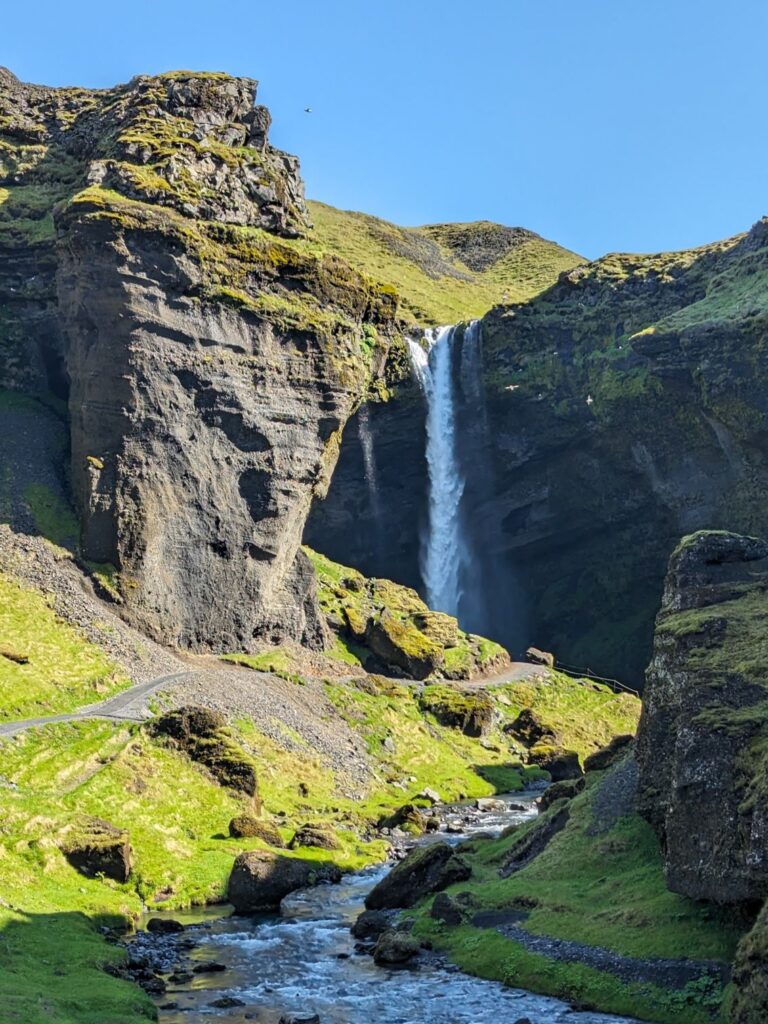
Sólheimajökull
Sólheimajökull is the first glacier you will run into on the South Coast. If you are interested, you can book a tour to hike on this glacier. Check out Arctic Adventures or Troll Expeditions for different tours. If you don’t want to take a tour to hike on the glacier, you can still visit. It’s a short 15-20-minute hike to the glacier, and you can walk right up the glacier if there are good conditions.
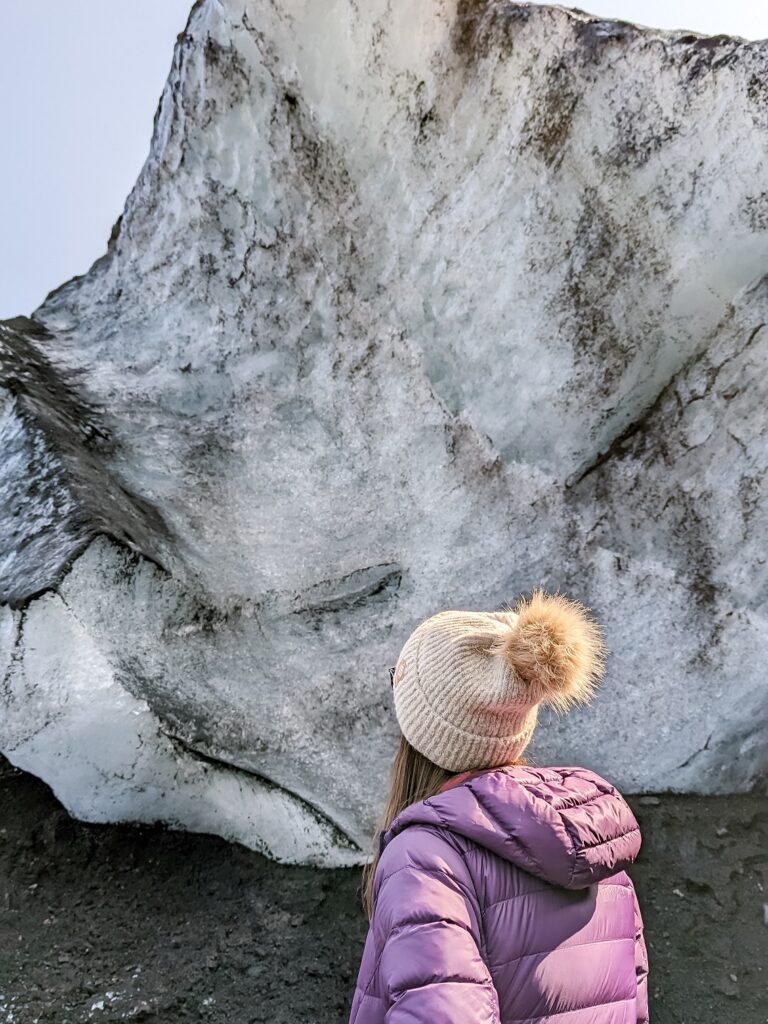
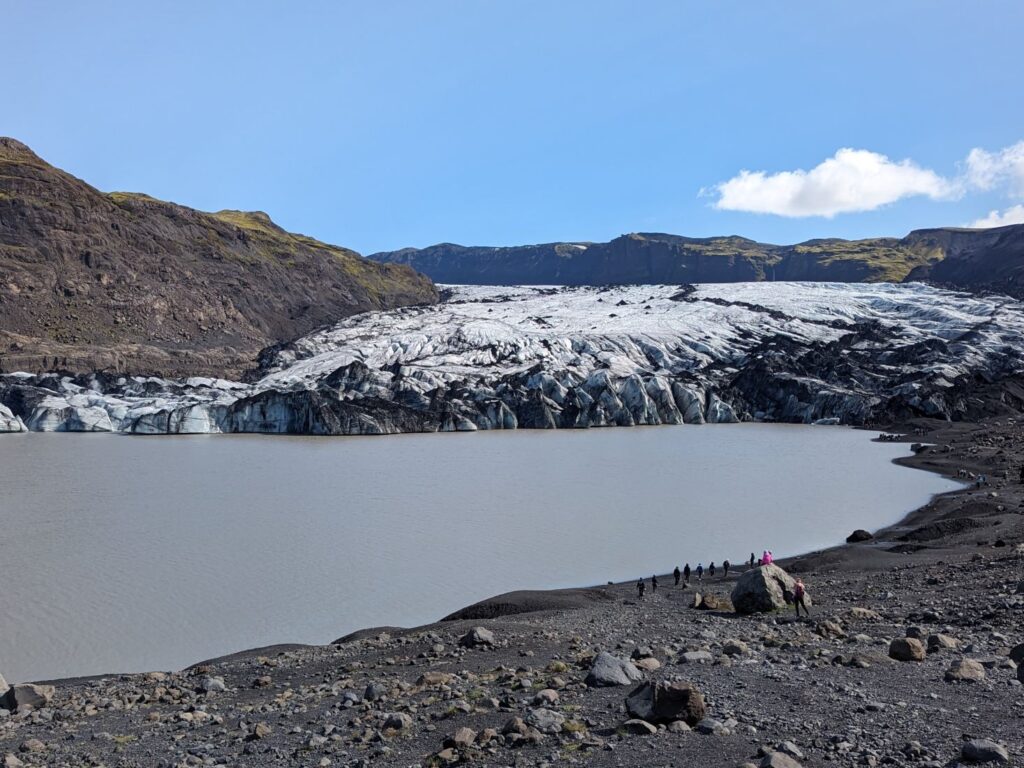
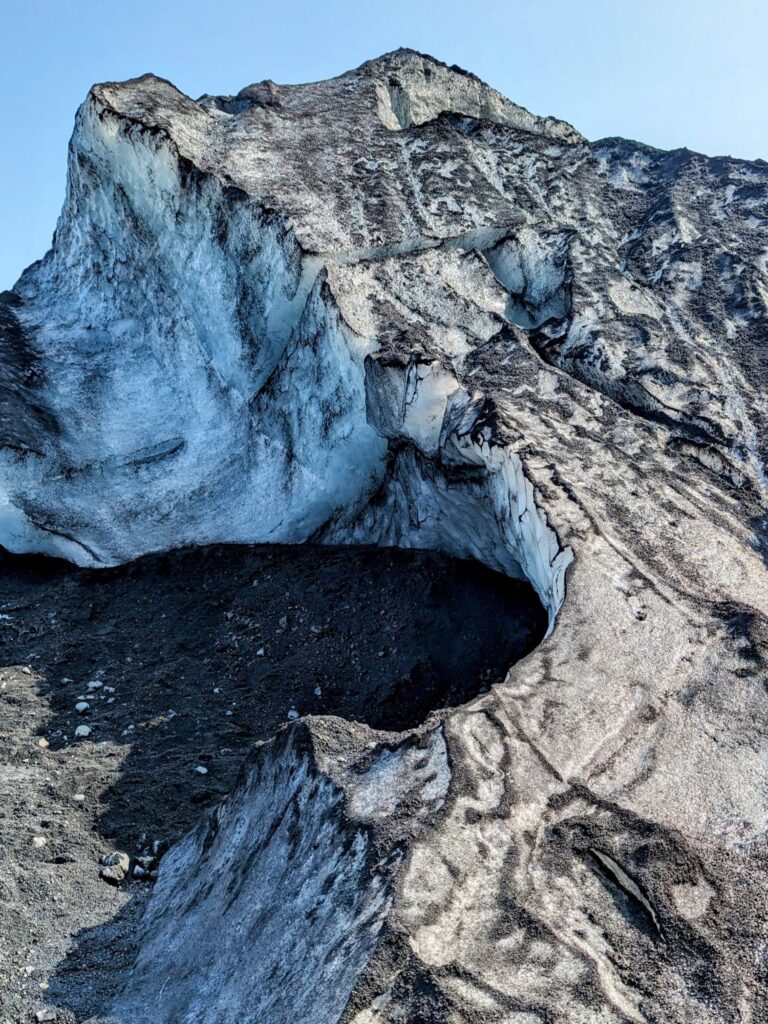
Sólheimasandur Plane Wreck
Sólheimasandur is a wrecked US Navy DC-3 airplane that crash-landed on the beach. Hiking to the plane takes approximately 1 hour and 30 minutes round trip. A shuttle bus is also available for 3,000 ISK.
Personally, I would say skip this stop if you are short on time to see everything else along the coast!
Dyrhólaey
Dyrhólaey is a great viewpoint along the South Coast. Head to the top of the cliff and park near the lighthouse. Be wary; this area can be very windy, so mind your car doors. The lookout has a view of the endless black sand beaches and the rock arch out in the water. You can also walk along the many paths to get closer to the beach and ocean views. You may even see puffins perched on the rocks if you are lucky.
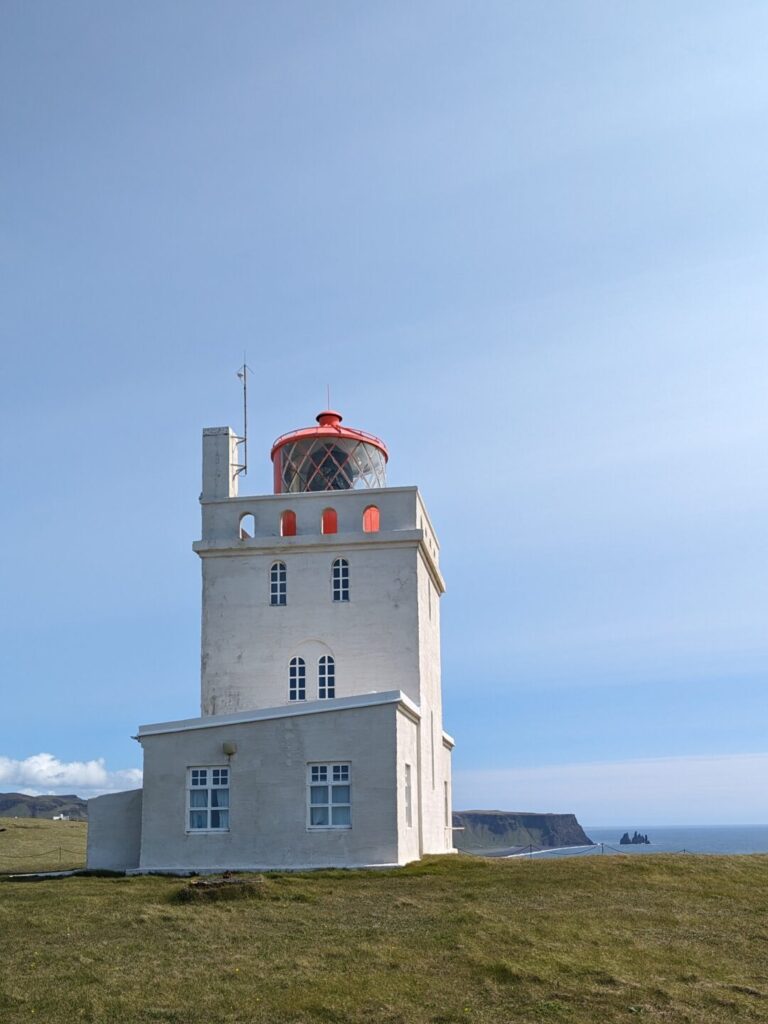
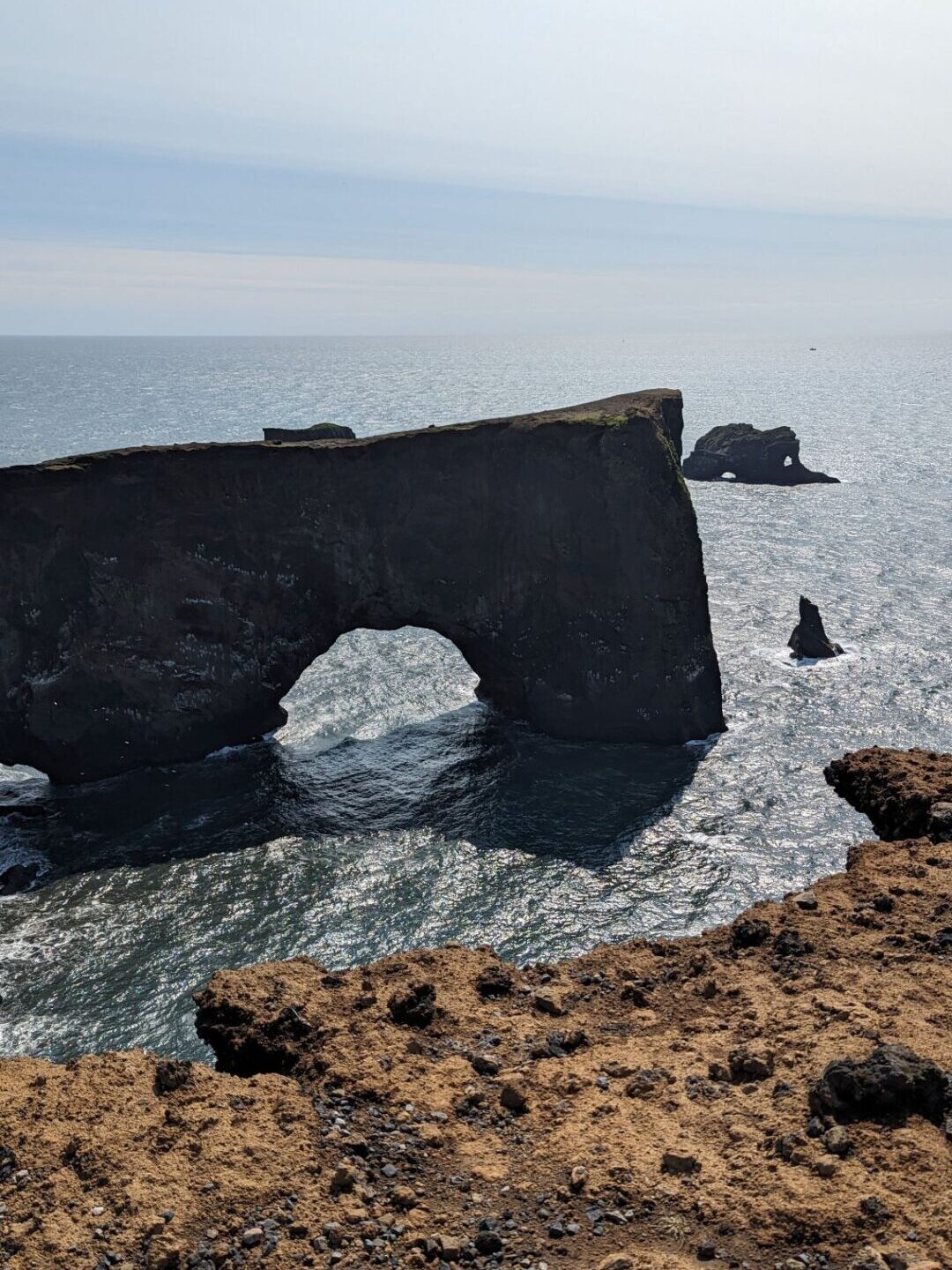
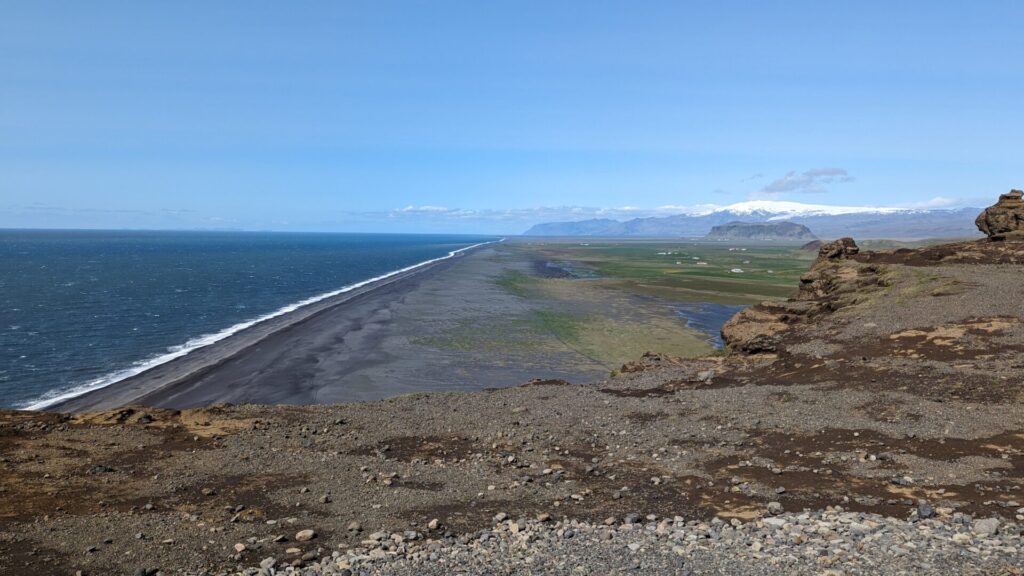
Reynisfjara Beach
This is probably the most famous beach in Iceland but also the most dangerous. The beach is gorgeous and dramatic, with black sand, basalt columns, and a cave. However, the waves here can be dangerous, so follow any warning signs and do not get near the water. To put it bluntly, people die here. Be safe!
Vik
Vik is a cute coastal town and a popular stop along the South Coast. You can consider Vik the point where you turn around and head back along the coast, or there are a couple of additional stops just beyond the village.
The town is home to the highly-rated Vik Lava Show, where you can see real lava. Many tour companies operate out of Vik, so if you are looking for a glacier hike or ice cave tour, this may be the place to visit! Vik is also a great place to stop for food and fuel.
Gígjagjá
Gígjagjá is also known as the “Yoda Cave” because when you go inside the cave, the entrance is shaped like Yoda! You can drive right up to the entrance of this cave, which makes it really easy to visit. Do note that the road from Route 1 to the cave is a dirt road that is pretty bumpy, so it will be a slow drive. This is also a great area to get up close with the lupine flowers in the summer.
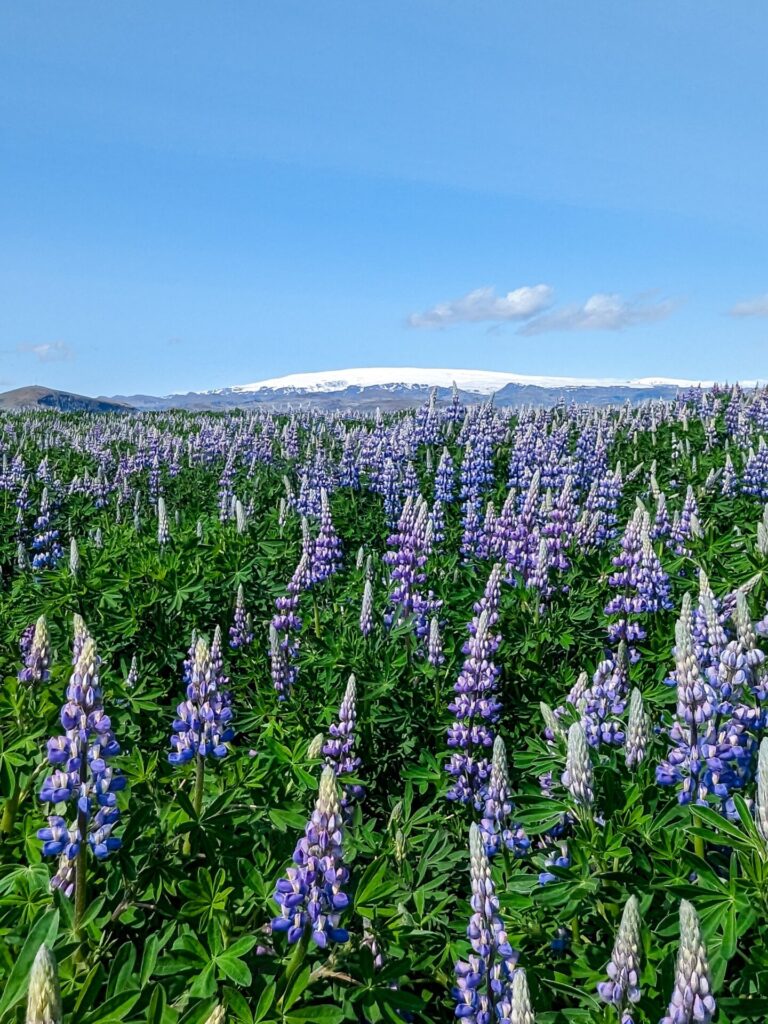
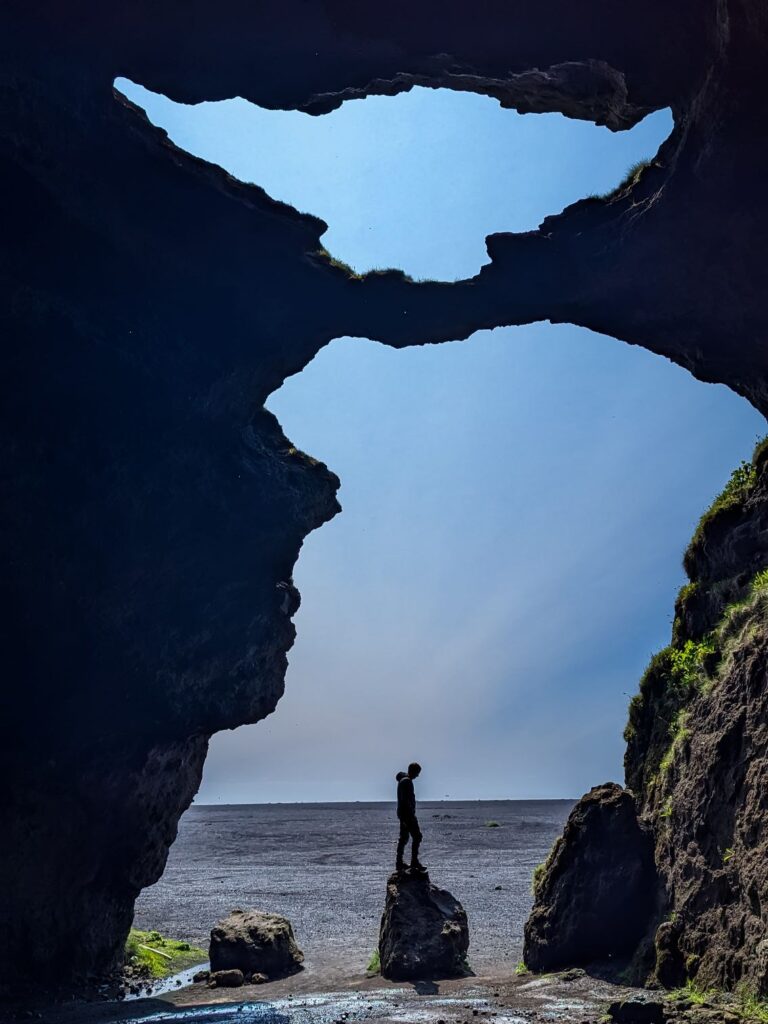
Fjaðrárgljúfur Canyon
This canyon was featured in Game of Thrones and is a must-visit; it’s really striking. This stop has two parking areas. One is paved and easy to get to but will require a short uphill hike to the best viewpoint. The second parking area is up a narrow, bumpy dirt road, but it will put you right next to the third viewpoint and waterfall.
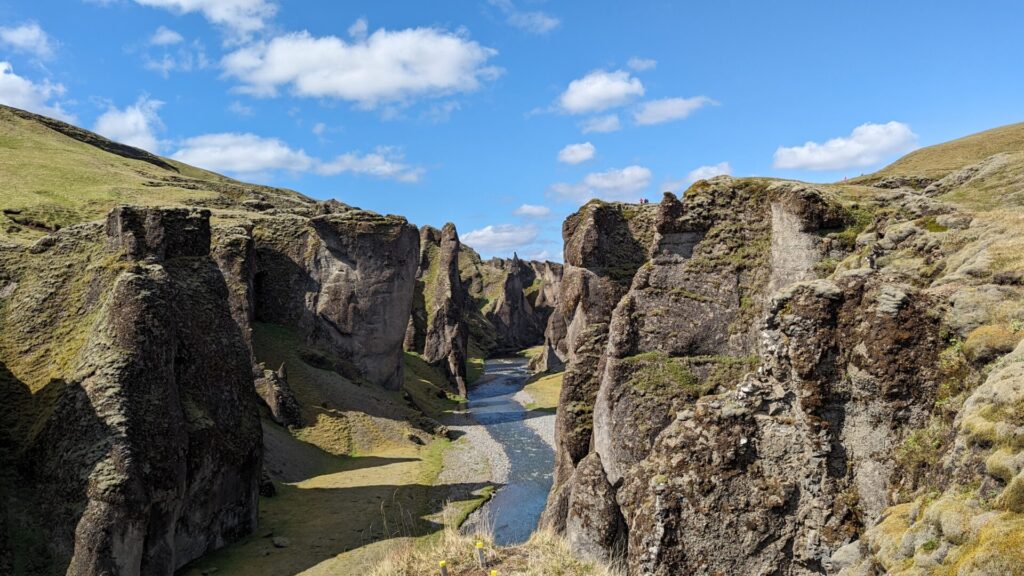
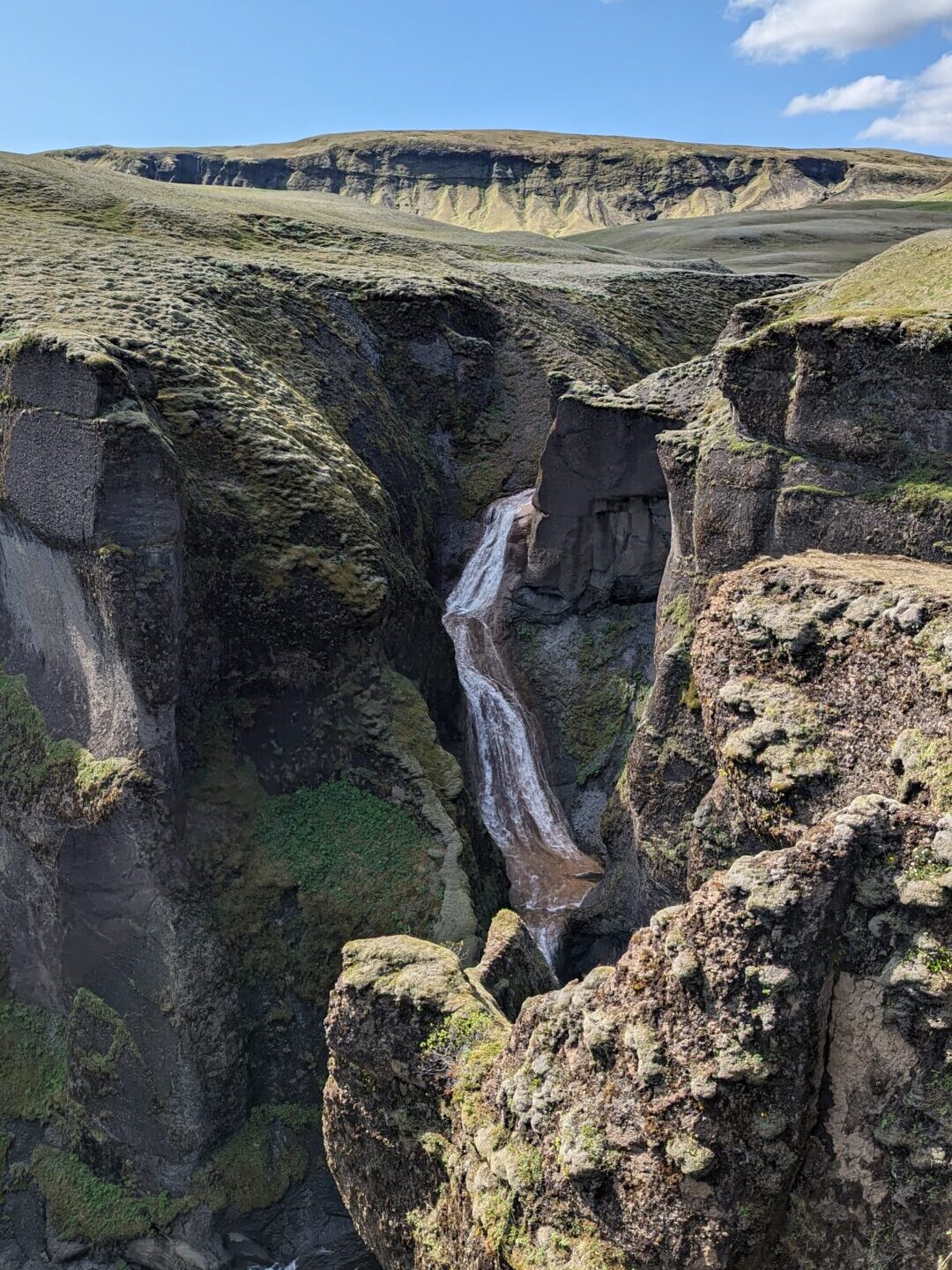
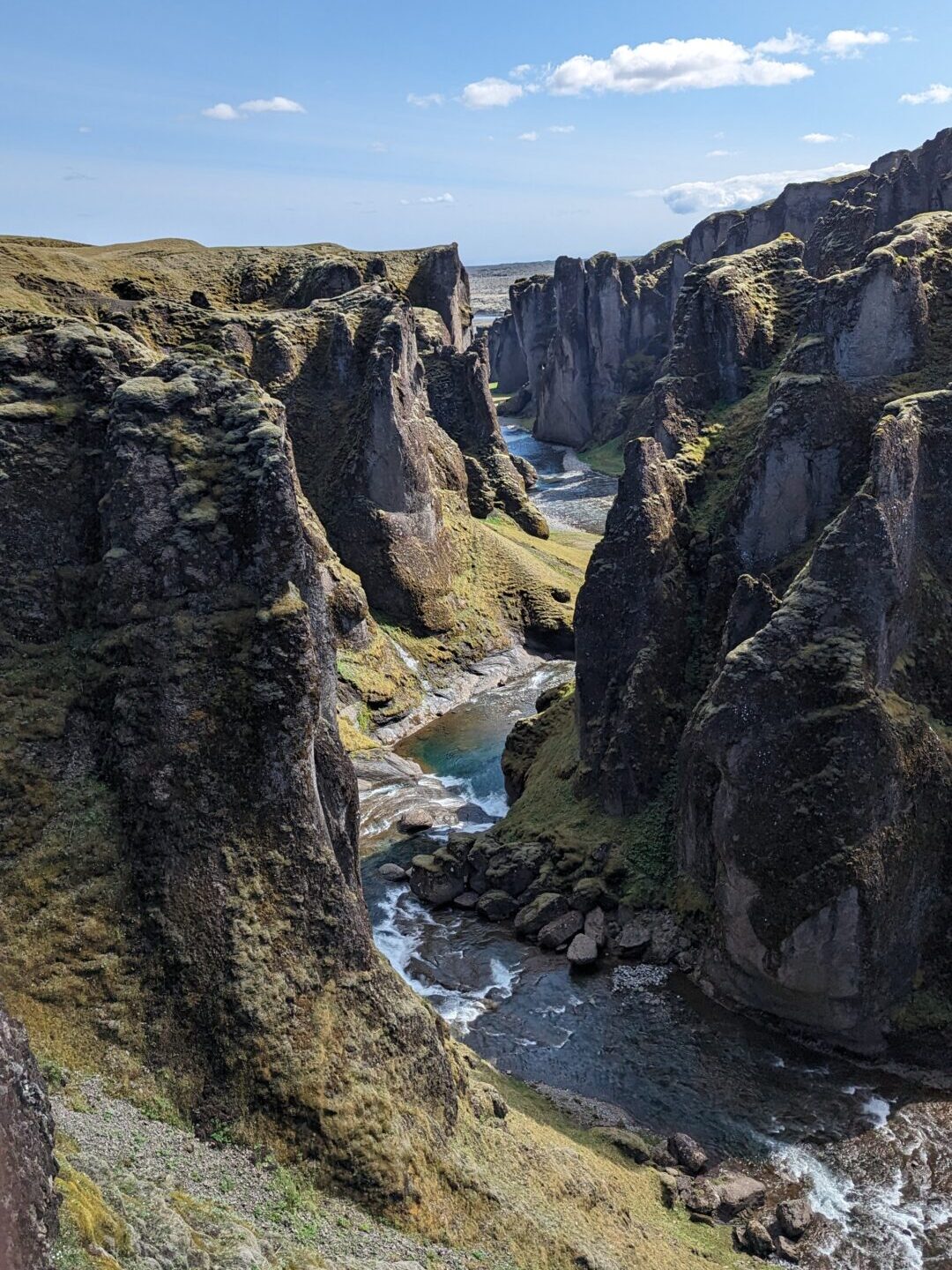
IMPORTANT: You likely will not have time to visit the locations beyond Fjaðrárgljúfur Canyon. However, all of these locations are worth mentioning in case you have a little extra time or decide to focus on the south coast on Day 3 instead of visiting Reykjavik.
If you choose to head all the way to Jökulsárlón, you likely will not make it back to Reykjavik until well past midnight.
Svartifoss
Svartifoss is one of Iceland’s most iconic waterfalls; it cascades over a dark basalt column cliff. To see the waterfall you will have to make the 2-mile (3km) out-and-back hike. This is a pretty popular waterfall, so expect crowds on the viewing platform.
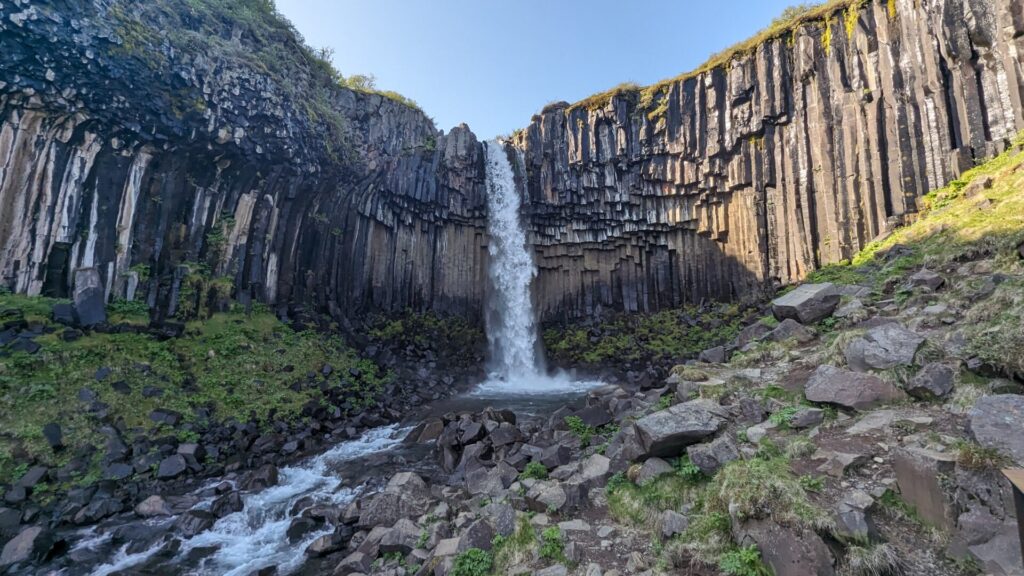
Mulagljufur Canyon
Mulagljufur requires a hike to get to the canyon; it is about a 2-hour round trip if you visit the viewpoint at the peak. You can continue beyond the viewpoint, bringing the round trip to nearly 4 hours. The full hike is about 3.6 miles (5.8km) out and back and is considered difficult. The canyon is full of striking views and geological formations and cliffs.
Jökulsárlón/Diamond Beach
One of the last stops along the south coast is the iconic Jökulsárlón and Diamond Beach. Jökulsárlón, aka glacier lagoon, is a gorgeous blue lake full of icebergs that have broken off of the Glacier feeding the lake. You can take boat tours on this lake to get up close and personal with the glaciers, icebergs, and even some wildlife.
On the opposite side of the bridge that leads to Jökulsárlón is a black sand beach known as Diamond Beach. This beach has been featured in many movies. The ice floating from the lagoon into the ocean is washed back onto this beach. If you get lucky, you will find large chunks of ice on the beach that look like huge diamonds, and you can walk right up to them!
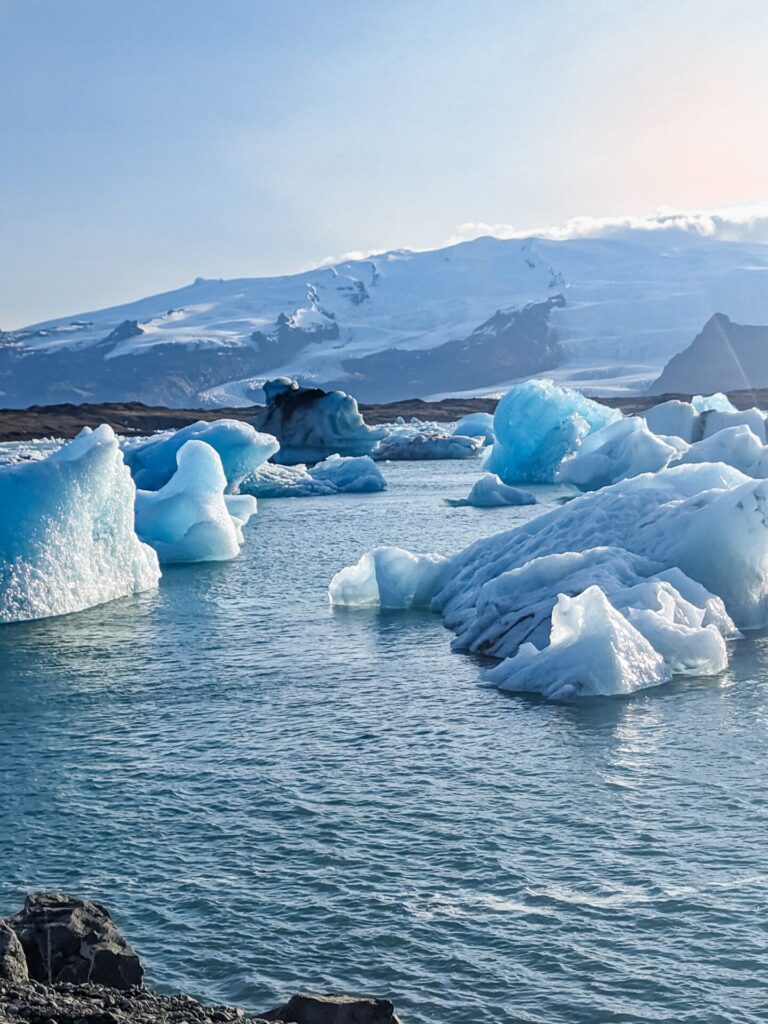
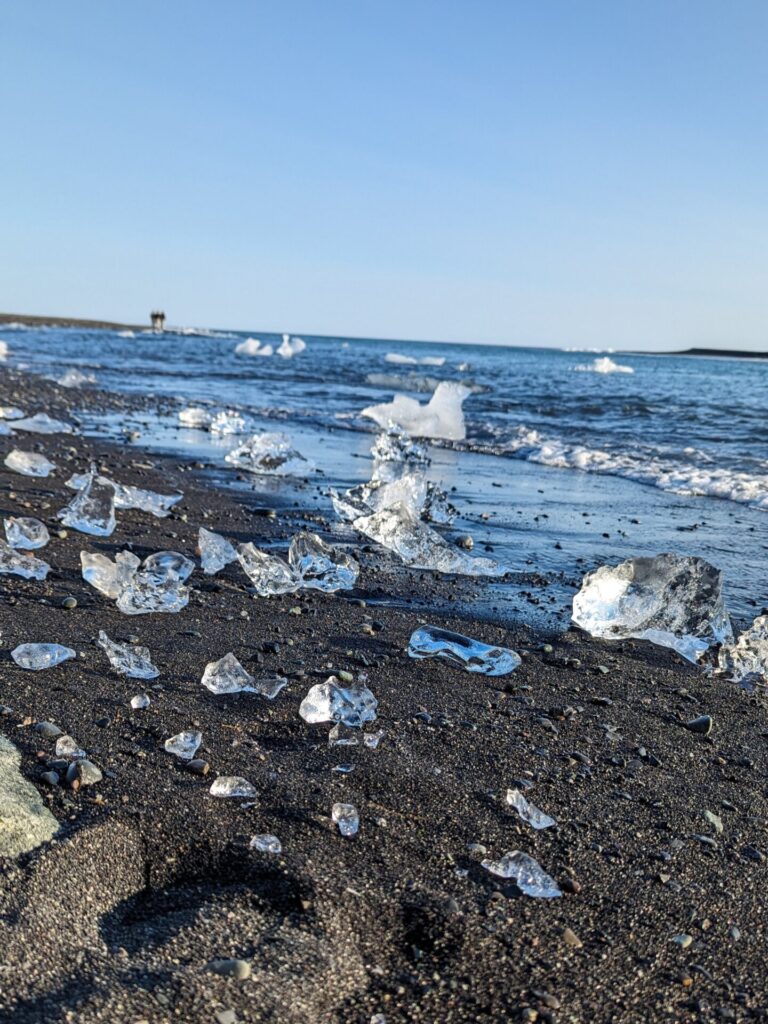
Option 2: The Snæfellsnes Peninsula
Driving Time: Maximum 6 hours | Ending Location: Reykjavik
The Snæfellsnes Peninsula is often lovingly called Little Iceland as it has a little bit of everything, which makes it a great place to explore on a short trip to the country! The peninsula is just north of Reykjavik, making it an easy day trip. You can head around the peninsula clockwise or counter-clockwise; however, going around counter-clockwise will likely result in lower crowds, especially in the summer.
Heading counter-clockwise, the loop consists of taking Route 1 north to Route 54, following it until you reach Route 574 (aka Útnesvegur), and continuing on that around the peninsula until you meet back up with Route 54. Eventually, you will complete the loop via Route 56 heading south and meet with Route 54 to drive towards Reykjavik.
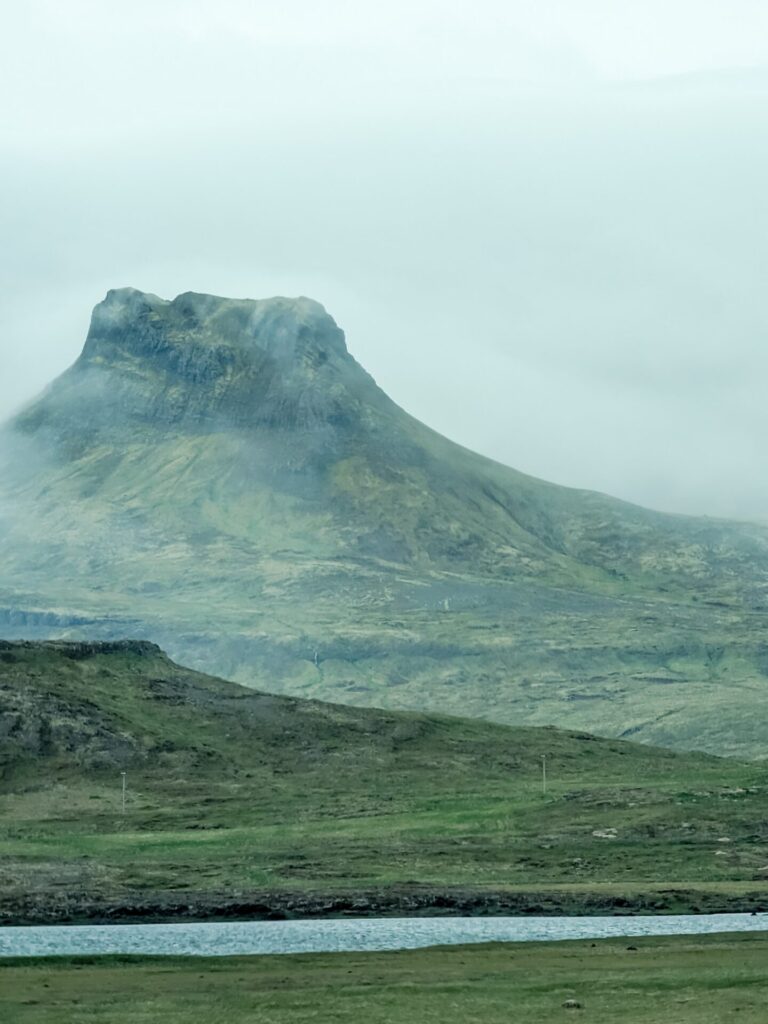
Places to see on the Snæfellsnes Peninsula
Eldborg Crater
Eldborg Crater is a volcanic crater formed within the last few thousand years, making it young by volcanic crater standards. You can hike to the crater’s rim for panoramic views of coastal cliffs, lava fields, and maybe even the Snæfellsjökull Glacier on a clear day. The trail is flat for the most part until you get to the crater, at which point it’s a steep climb up to the rim of the crater. The hike is 1.5 miles (2.5km).
Ytri Tunga Beach
Ytri Tunga Beach is a golden beach with beautiful views. However, the main draw for tourists is the population of harbor seals, which can often be spotted lounging on the rocks near the shore. The parking fee is 750 ISK.
Bjarnarfoss
Bjarnarfoss is a two-tier waterfall that cascades down basalt columns. You can hike up quite close to the falls, though the hike gets steep; just follow the path and cross the little wooden bridge. The waterfall is really easy to access and is even visible from the road.
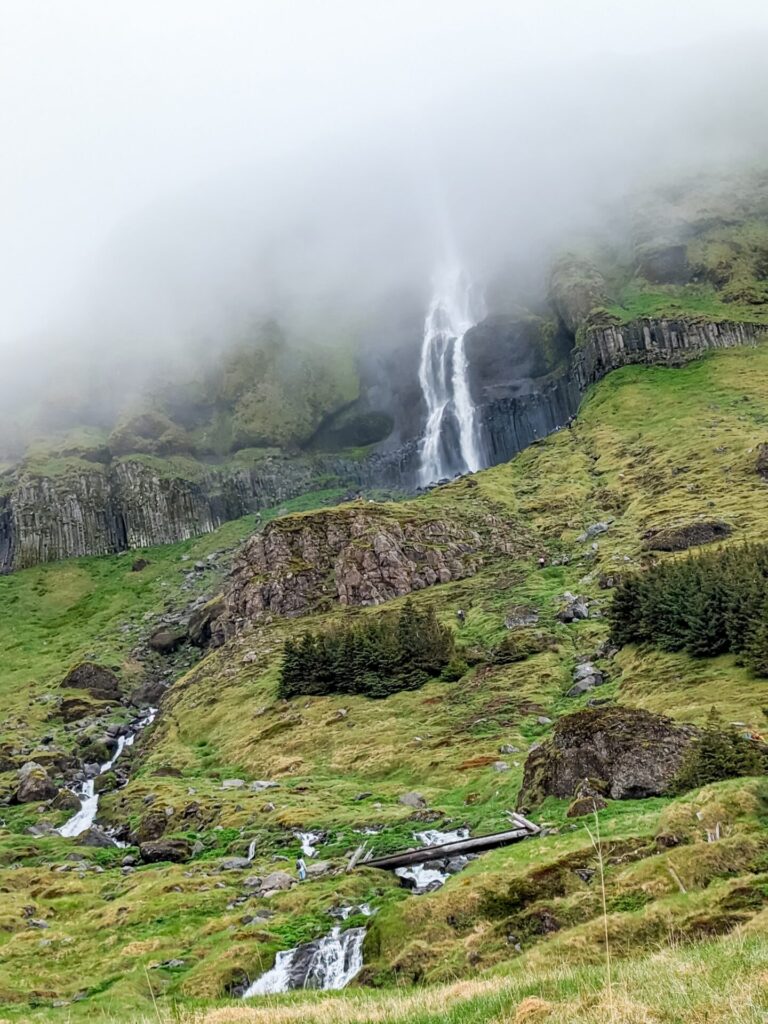
Búðakirkja
Búðakirkja is the famous photogenic little black church. It’s a picturesque little church and is one of Iceland’s most photographed churches due to its unique black exterior contrasting with the surrounding environment. You can stop and walk the grounds of the church, there are also a few walking paths and huuikes in the general area.
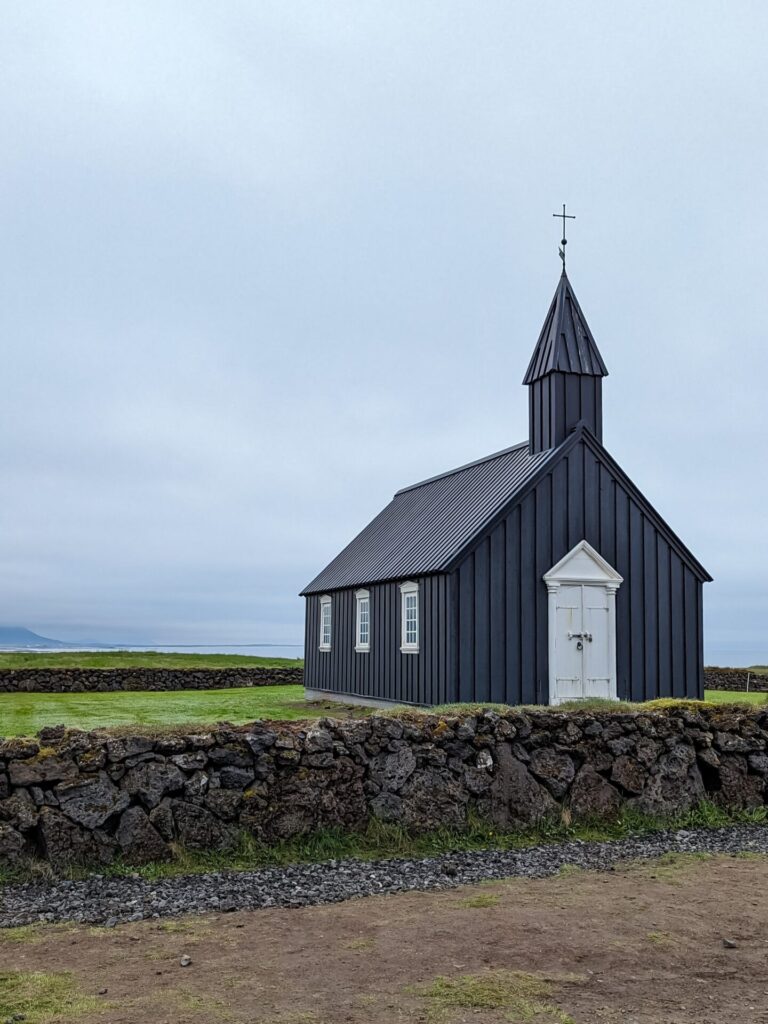
Rauðfeldsgjá Gorge
Dramatic, towering, mossy cliff faces surround Rauðfeldsgjá Gorge. You will need waterproof boots to climb inside the gorge and waterproof clothes to climb to the waterfall inside. There is a small parking area just north of the road, and then it’s a 20-minute uphill walk to the gorge. This is a can’t-miss stop!
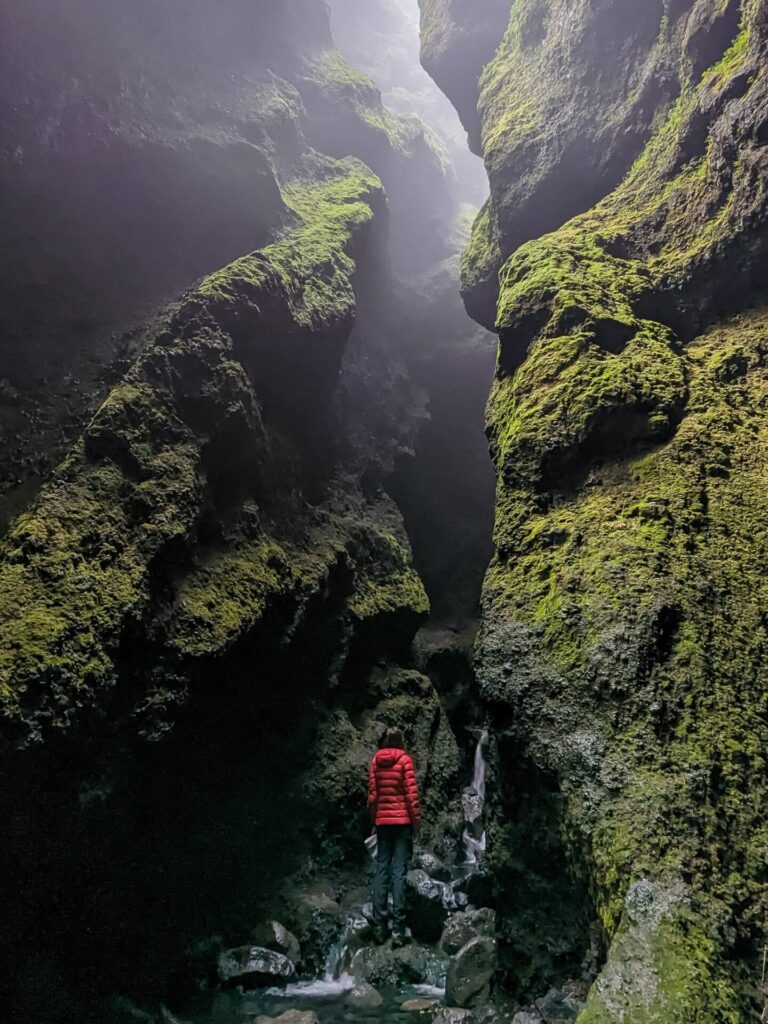
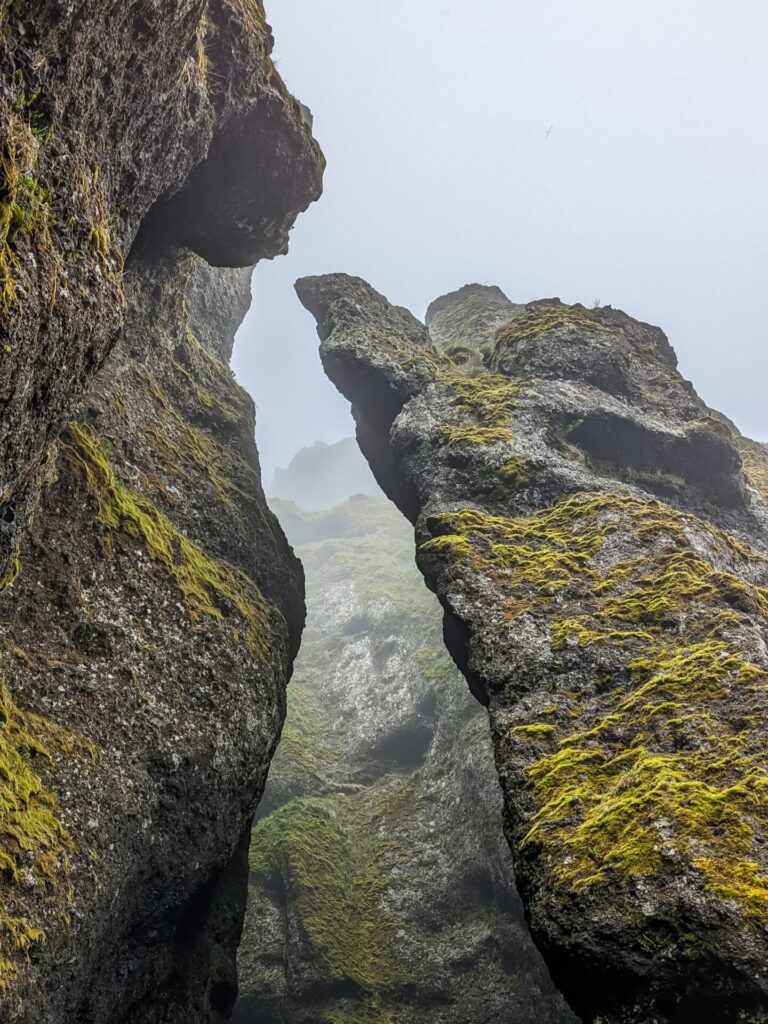
Arnarstapi
The town of Arnarstapi is home to a stone arch and a stone bridge, the latter of which you can walk onto during a clear, calm day. You will need to make a short walk to both of these stops from the parking area. There are viewpoints for each, as well as a cliff viewpoint. Stay safe if you choose to venture out onto the stone bridge; it can be dangerous. Keep the weather in mind.
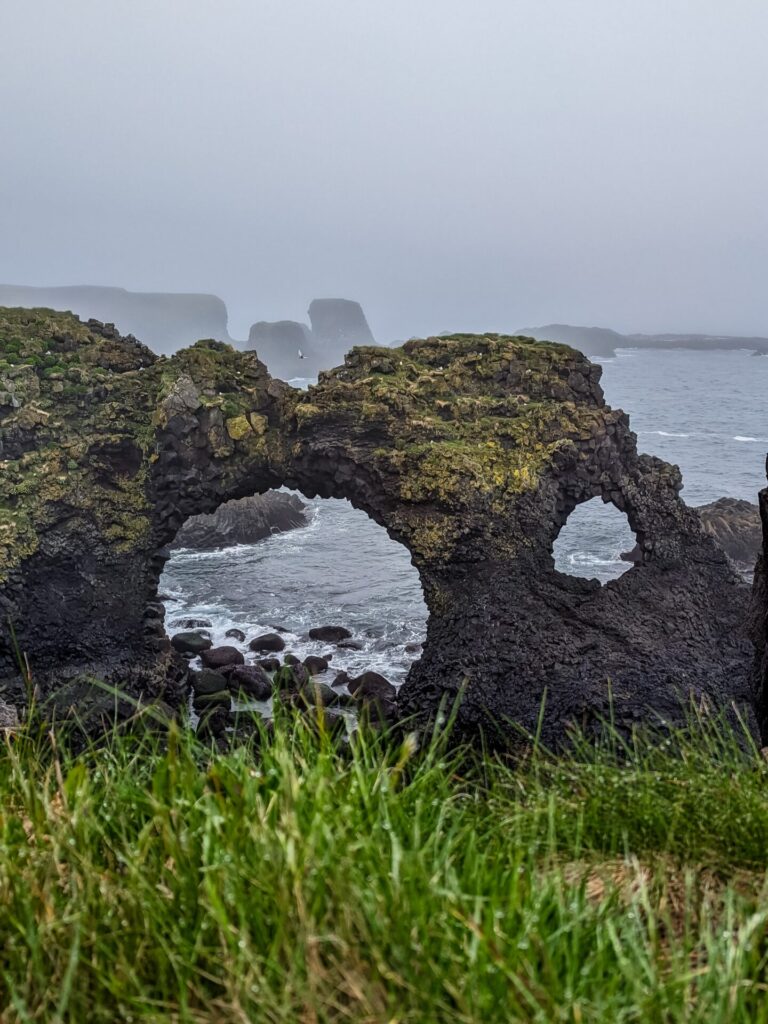
Arnarstapi is also a great place to take a break and get some food! It’s one of the small towns with multiple food options along the Snæfellsnes route.
Lóndrangar View Point
Lóndrangar View Point is best known for a pair of basalt towers overlooking the ocean. The entire area is gorgeous; the only downside is that the cliffs are home to hundreds, if not thousands, of sea birds, so it’s not the most pleasant-smelling stop.
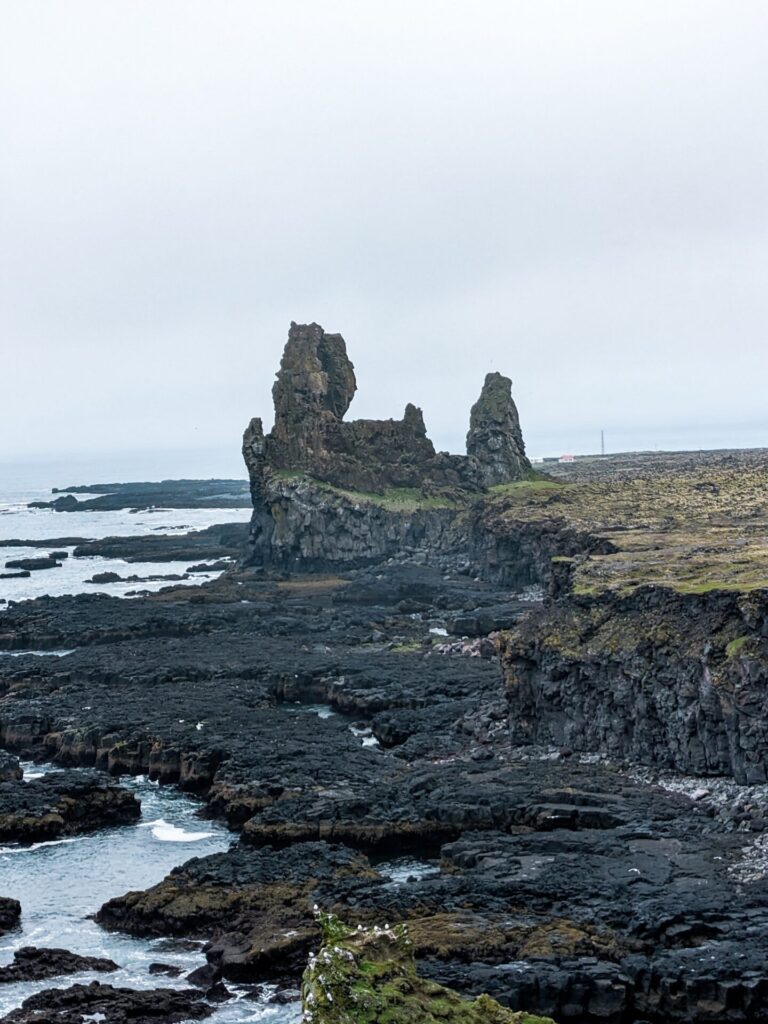
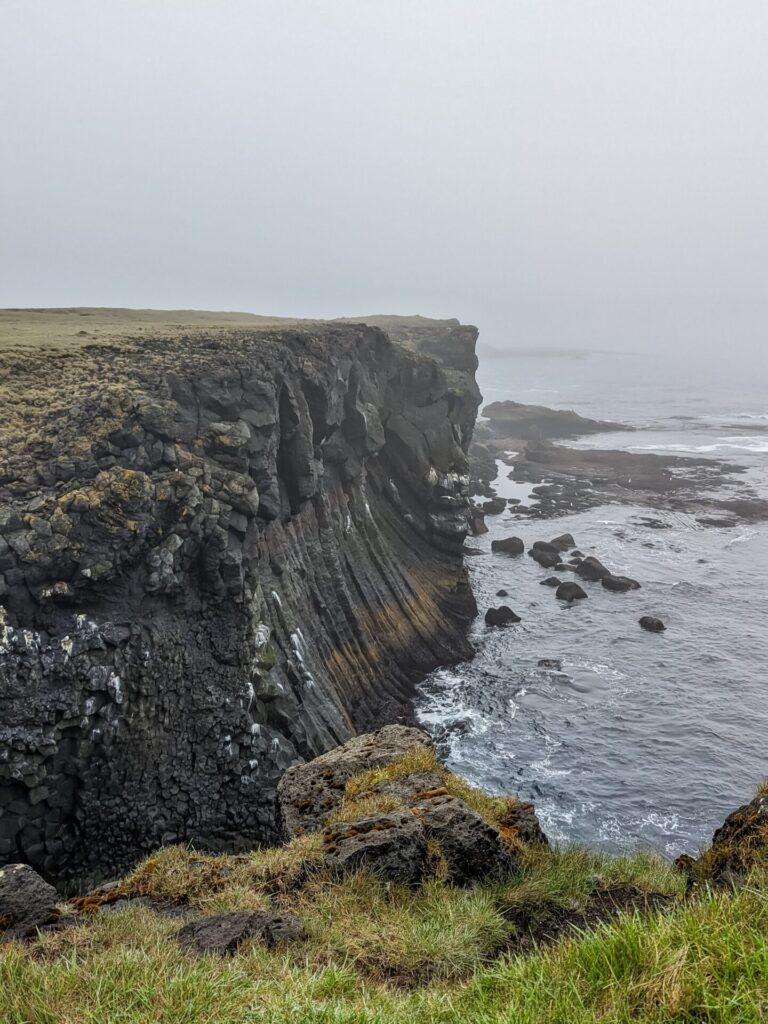
Djúpalónssandur Beach
Djúpalónssandur Beach is a black stone beach with beautiful rock formations. The walk down to the beach from the parking area is gorgeous. The beach itself has remnants of a decades-old wrecked boat and a sign explaining the boat’s story. The waves at this beach can be pretty rough, but it’s completely worth the visit. It was definitely a highlight of our trip!
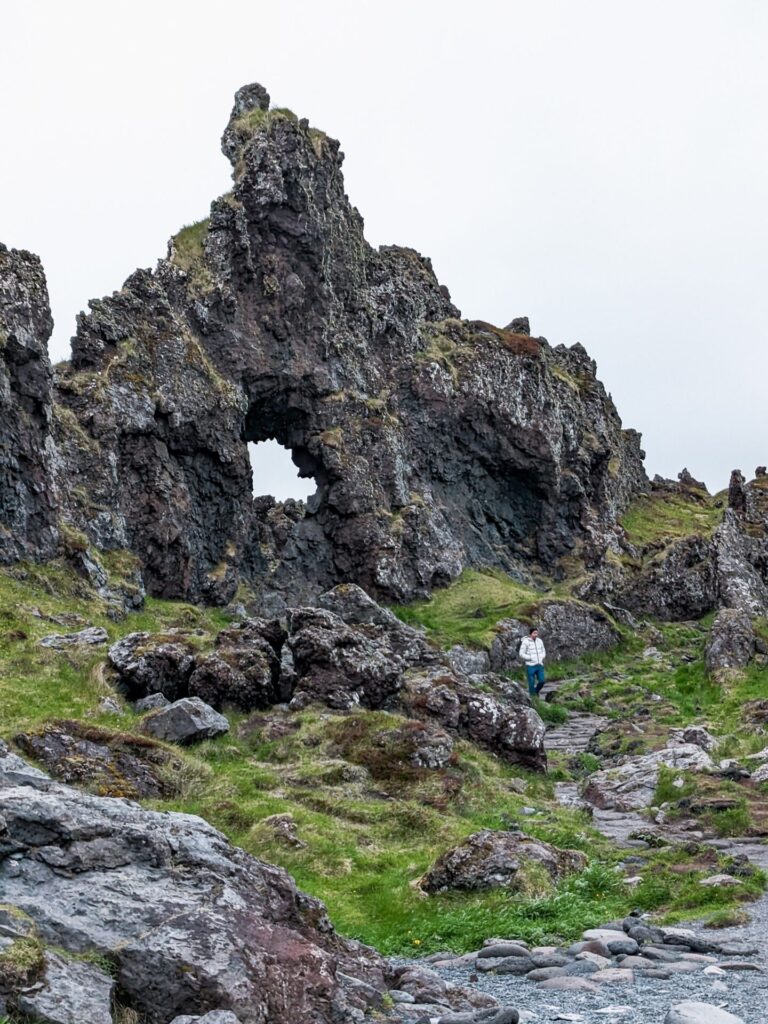
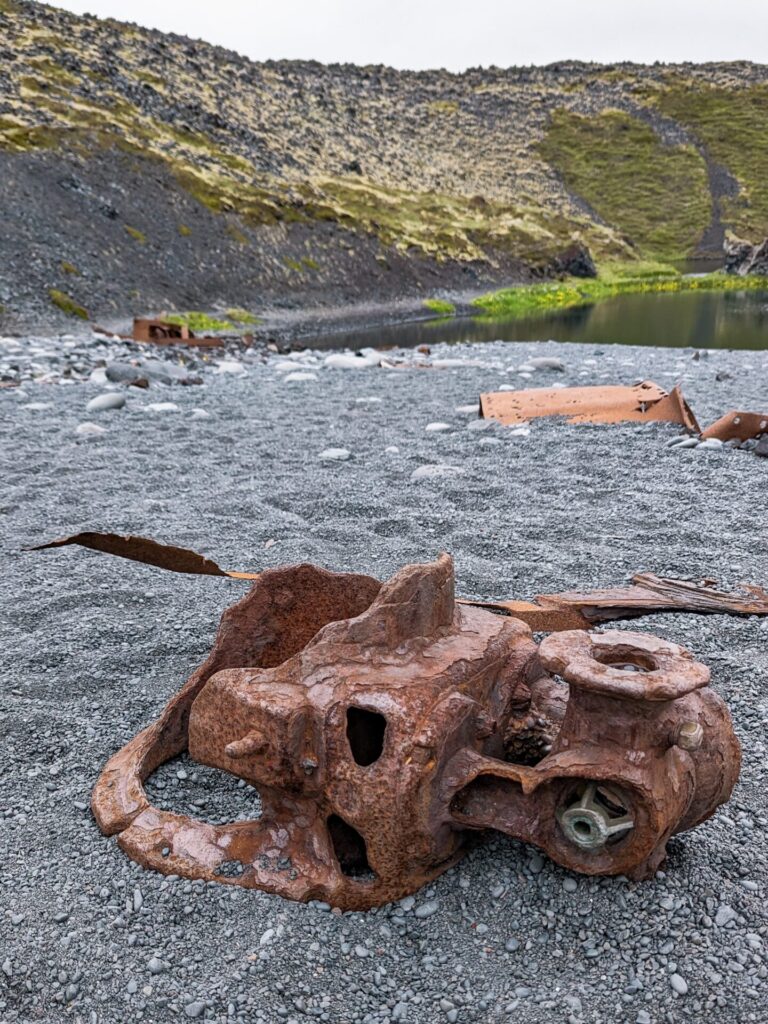
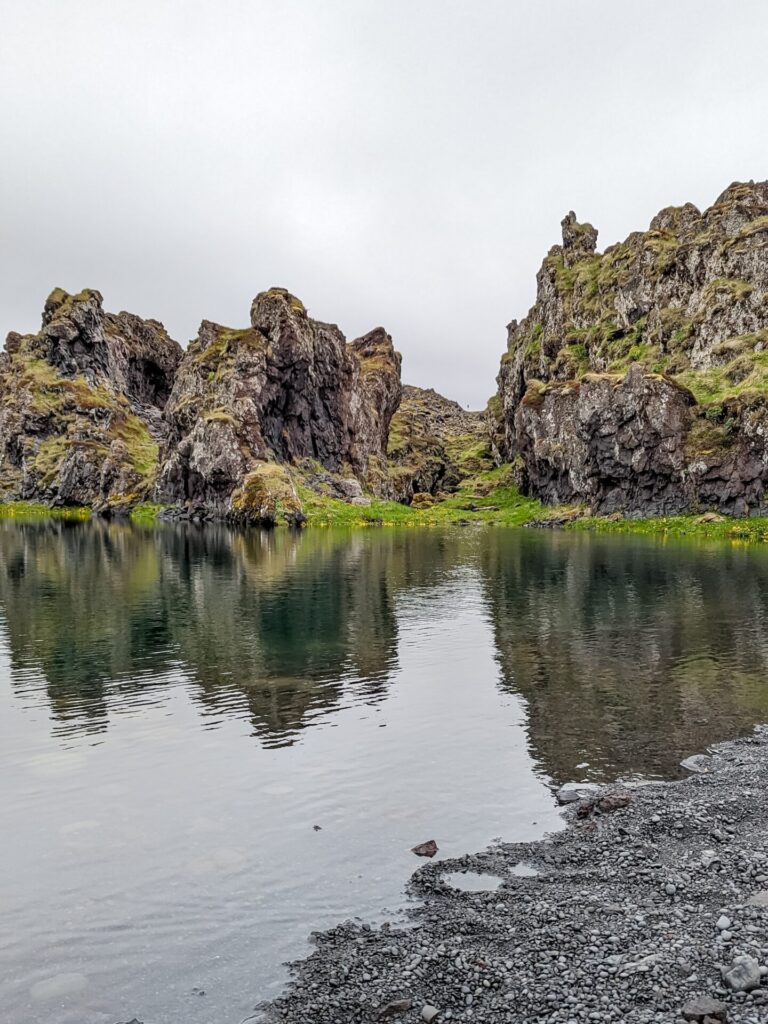
Saxhóll Crater
Saxhóll Crater is quite striking against the surrounding landscape. If it’s a clear day, the top of the crater offers a great view of Snæfellsjökull Glacier. However, you will have to climb quite a few steps to get to the top! If it’s not a clear day, you likely won’t be able to see the glacier, and the hike to the top is not really worth the effort. Snap some photos of the crater, though!
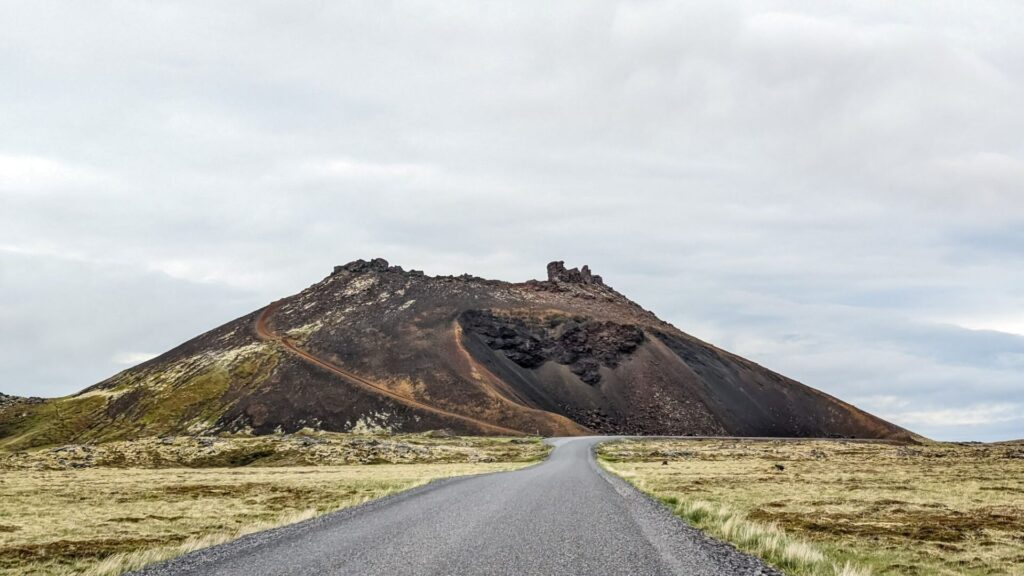
Skarðsvík Beach
Unlike many of the beaches in Iceland, Skarðsvík one is not black sand; it’s golden with turquoise waters and stark black cliffs. A really gorgeous and quiet beach for a quick relaxing stop. Watch for the tide and waves; they can be aggressive.
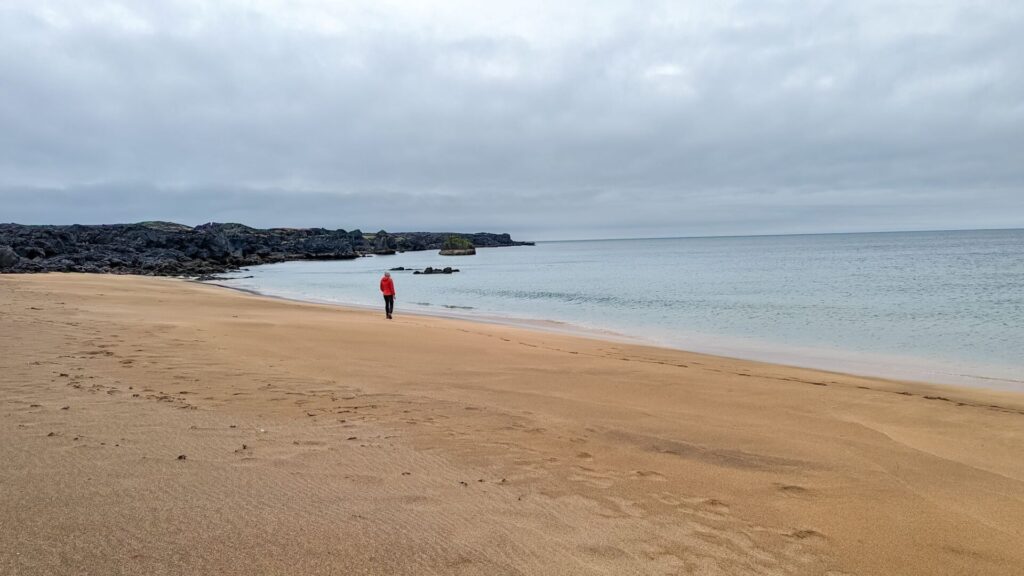
Kirkjufell
Kirkjufell is a very dramatic mountain right on the northern coast of the peninsula. It’s one of the most photographed and recognizable mountains in Iceland, and it was also featured in Game of Thrones.
Across from Kirkjufell is a waterfall and lake. When the weather is calm and clear, you can capture a mirror-image reflection of the mountain in the lake. We had no such luck on our trip.
It is also possible to climb Kirkjufell in the summer. However, you should be an extremely experienced and confident mountain climber as the climb is quite steep and difficult. It’s not recommended for most visitors.
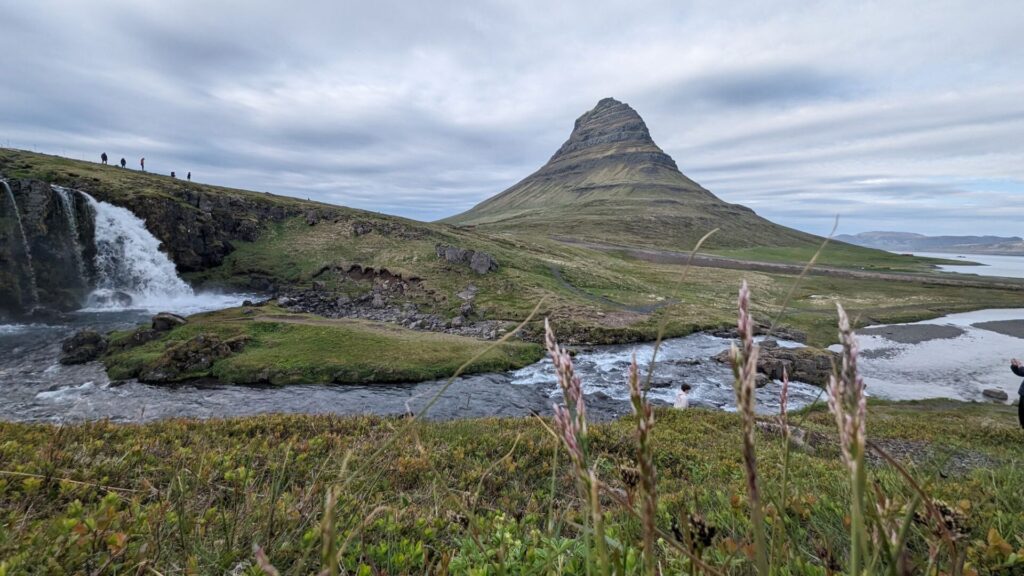
Grundarfoss
Just east of Grundarfjörður is another waterfall worth stopping at: Grundarfoss. To the south of Route 54, there is a small turn-off and parking area. You will have to hike through local farmland to get to the waterfall, but there are signs explaining where to walk and how to get there. You may run into the farmer’s horses while you hike to the falls!
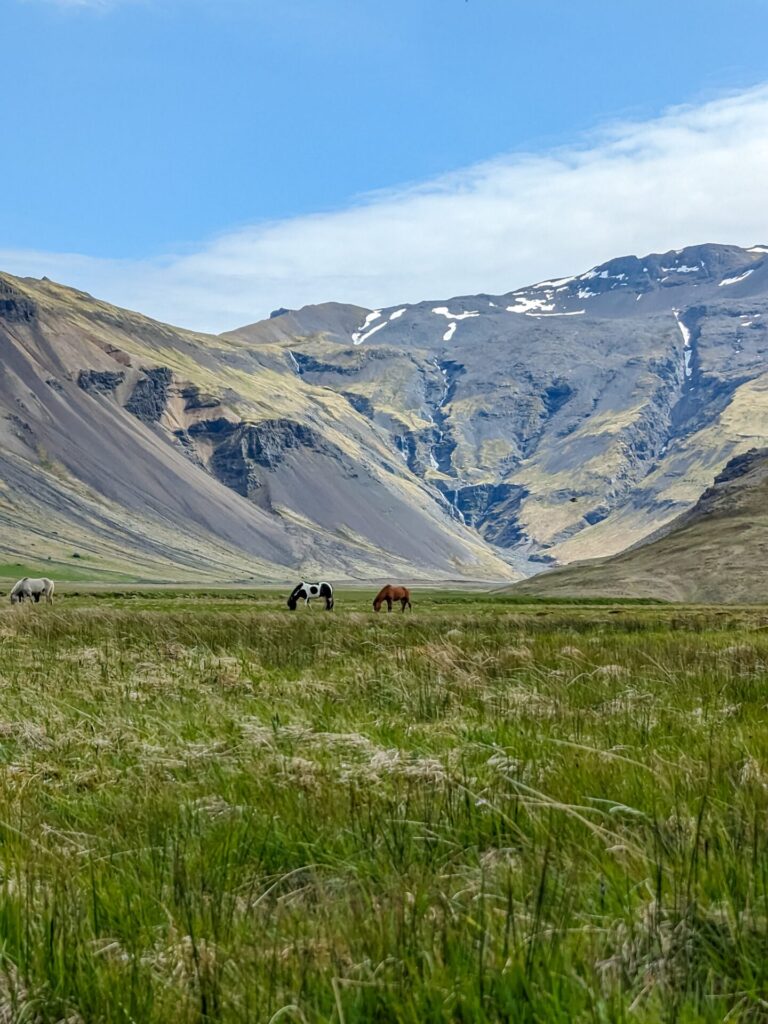
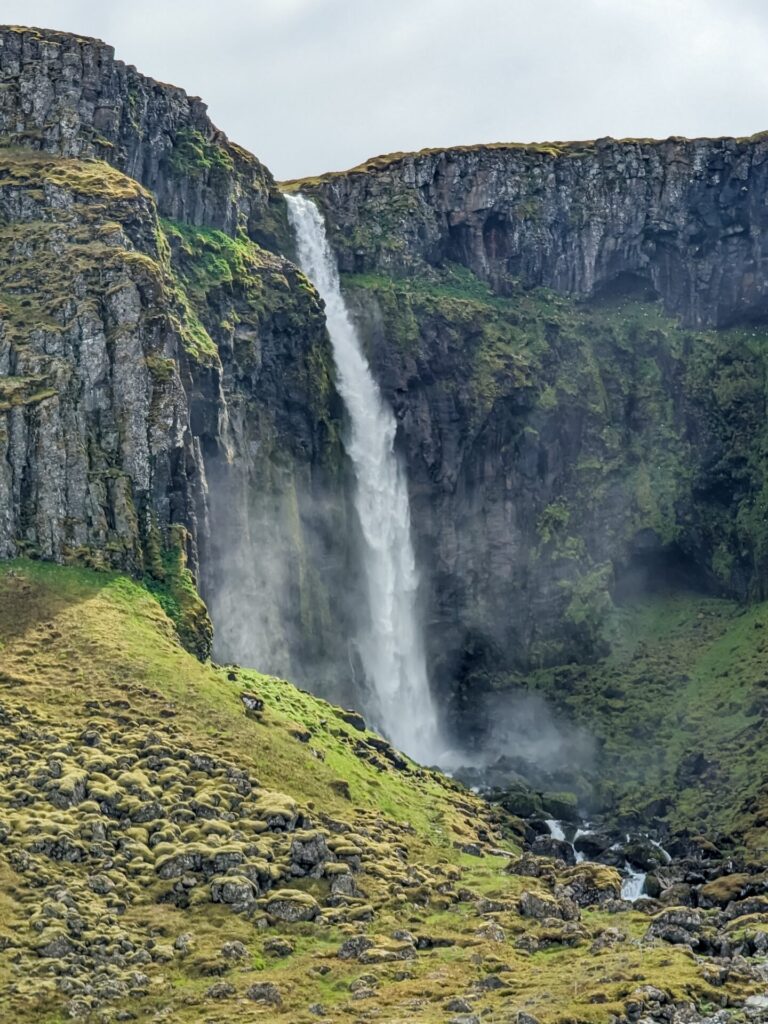
Day 3: Reykjavik & Reykjanes Peninsula
Driving Time: Maximum 2.1 hours | Ending Location: Reykjavik
Places to See in Reykjavik and the Reykjanes Peninsula
Sky Lagoon
Just south of Reykjavik is the Sky Lagoon, a geothermal spa that is the perfect place to relax before ending your stay in Iceland! The Sky Lagoon is known for its Seven-Step Ritual and infinity-edge pool, which looks out over the ocean. This location is newer and very sleek; if you were only visiting one geothermal bath in the area, I would honestly pick stopping here over the Blue Lagoon
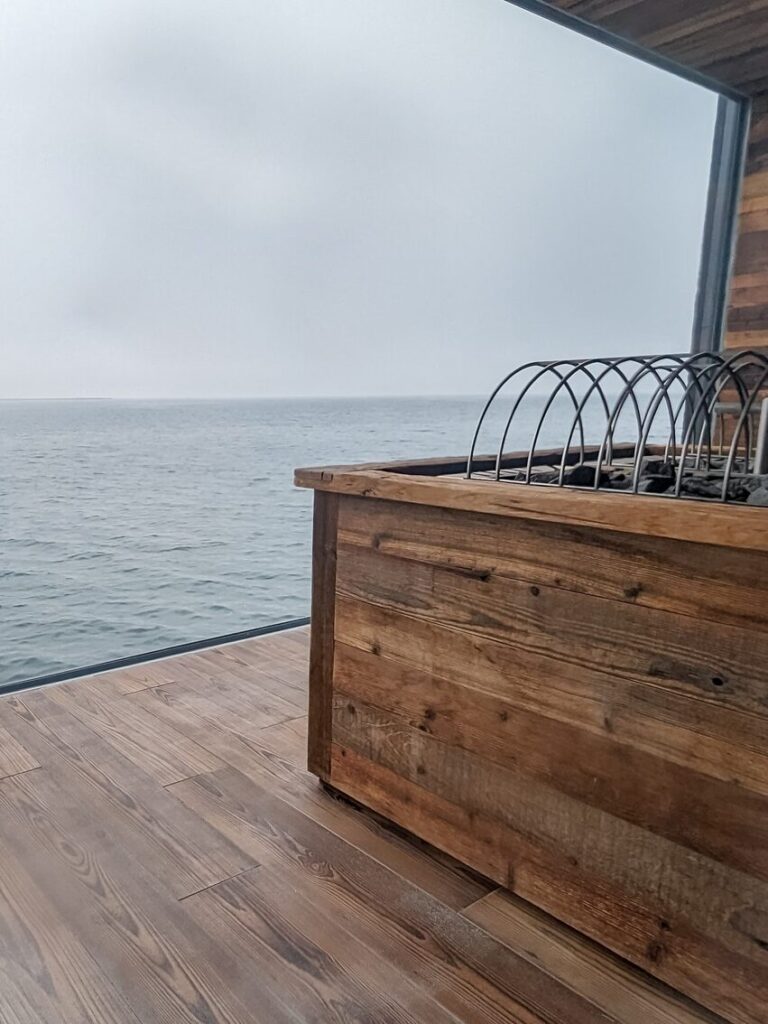
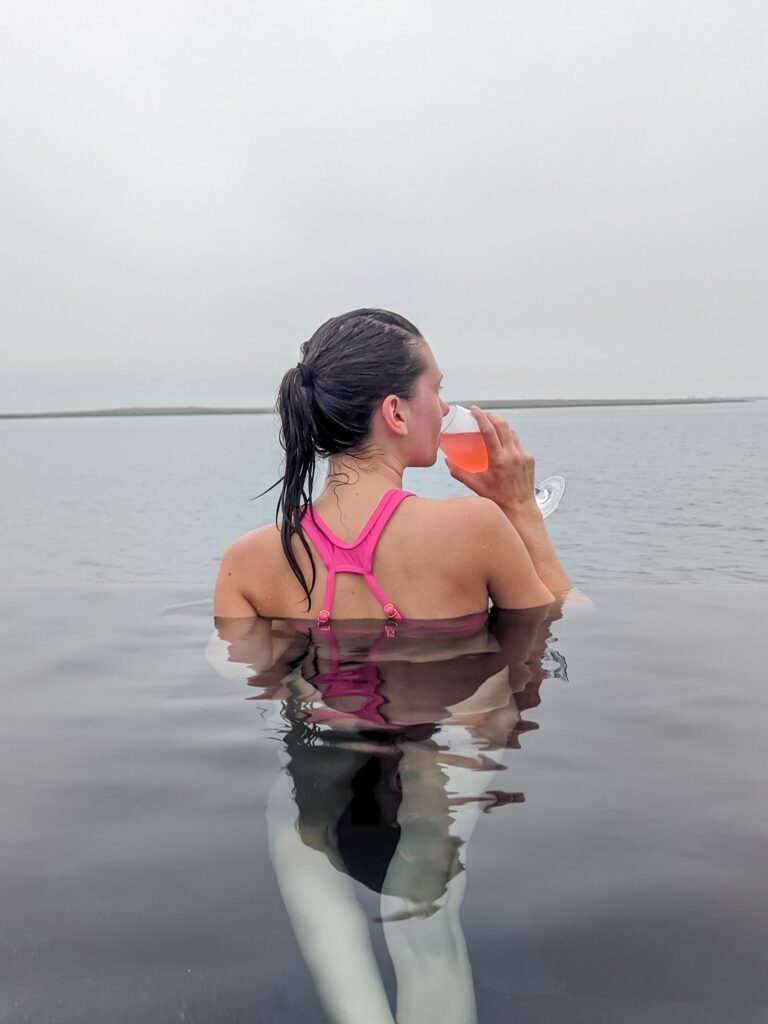
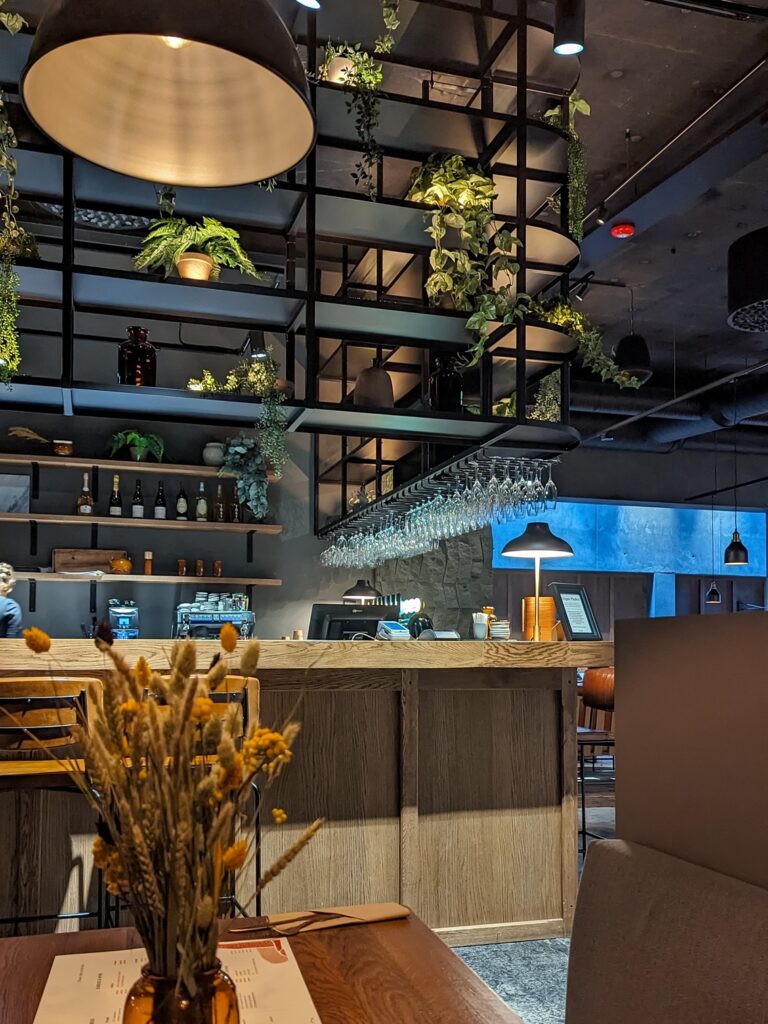
Rainbow Street (Skólavörðustígur)
Rainbow Street is centrally located in Reykjavik and is a charming, vibrant street with colorful shops, cafes, and restaurants. At the far end of the rainbow-painted street, you will find the famous Hallgrimskirkja. This is a popular location for photos!
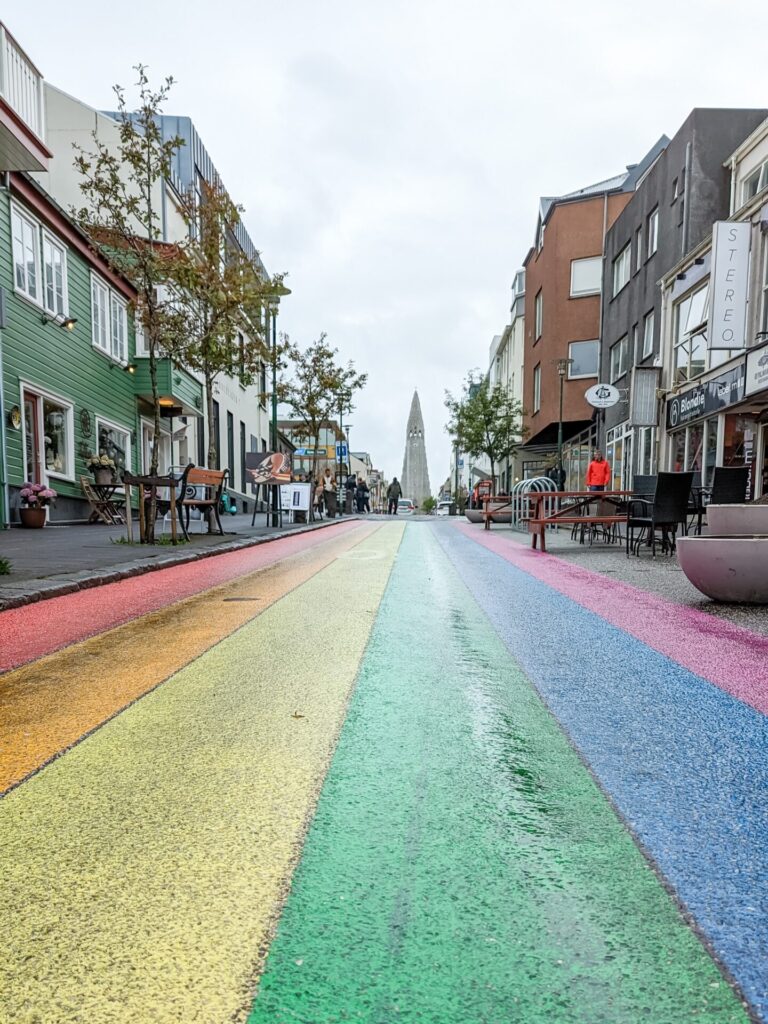
Hallgrimskirkja
Hallgrimskirkja is a 244-foot (74.5-m) Lutheran Church, the largest church in Iceland, and one of the tallest structures. The church is one of the most well-known landmarks in Iceland’s capital and can be seen from all over the city. At the top of the spire is an observation deck that gives a great view of the city; it costs 1400 ISK to visit the inside of the church.
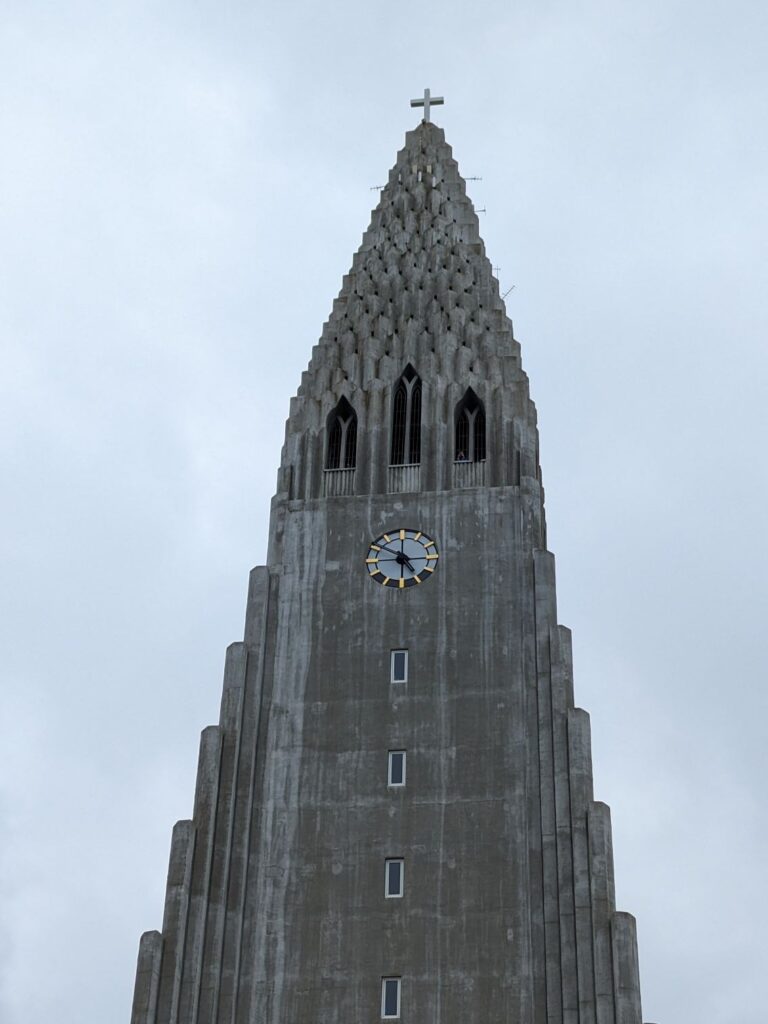
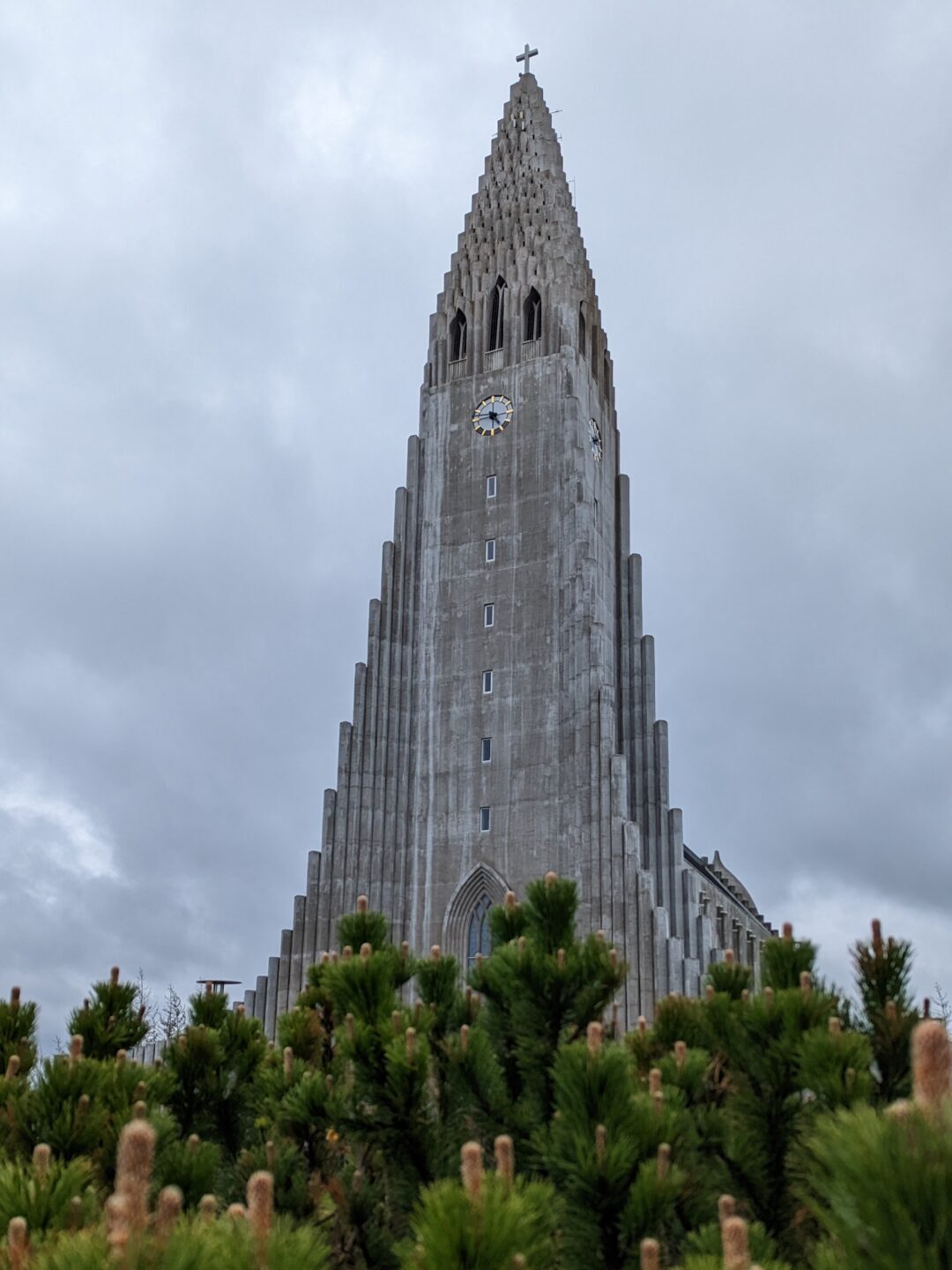
Tjörnin Lake
Tjörnin, often referred to as the Pond, is one of the main focal points in the city. Tjörnin is surrounded by picturesque walking paths and is a great place for photos. You will also find Reykjavik City Hall and the National Gallery of Iceland in the area.
Harpa Concert Hall
The Harpa Concert Hall not only hosts various events, such as concerts, operas, and festivals, but is also known for its striking architecture. From the outside, the concert hall looks like a glass honeycomb. Harpa is centrally located and right on the water and near the Sun Voyager Sculpture.
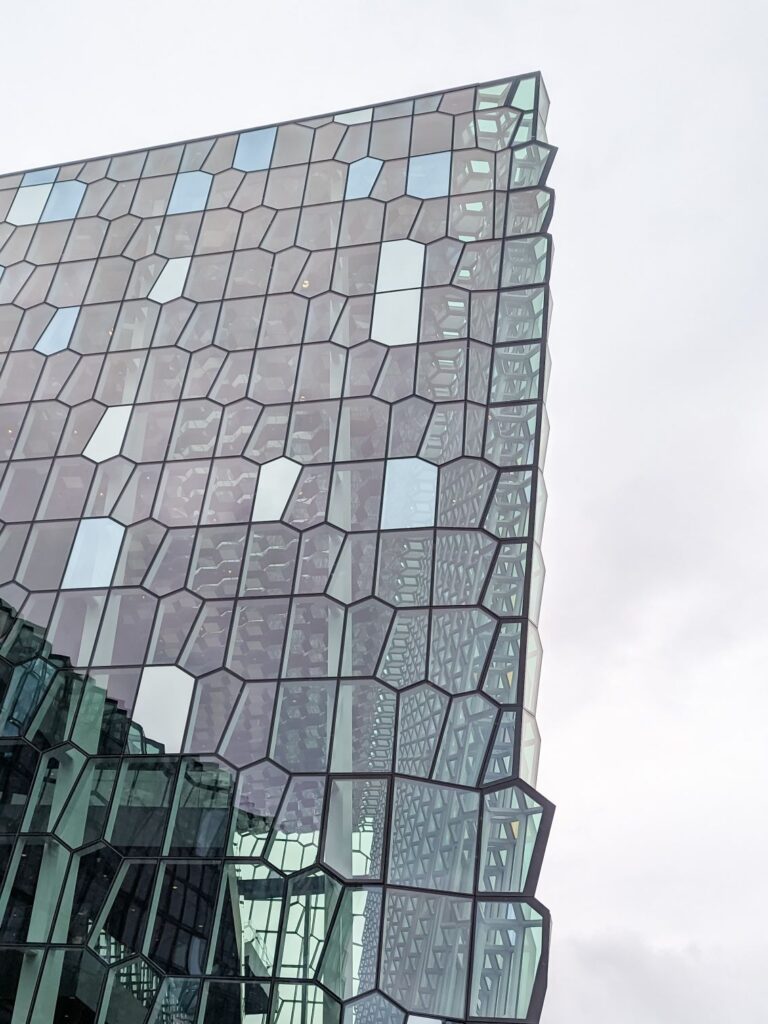
Sun Voyager Sculpture
The Sun Voyager is a sculpture by Jón Gunnar Árnason on the oceanfront. The sculpture resembles a Viking ship, however it is in fact not a Viking ship but a “dreamboat” and and a ode to the sun. The sculpture is meant to represent undiscovered territory, hope, and freedom. The area is really gorgeous, and there are some areas where you can sit and enjoy the view.
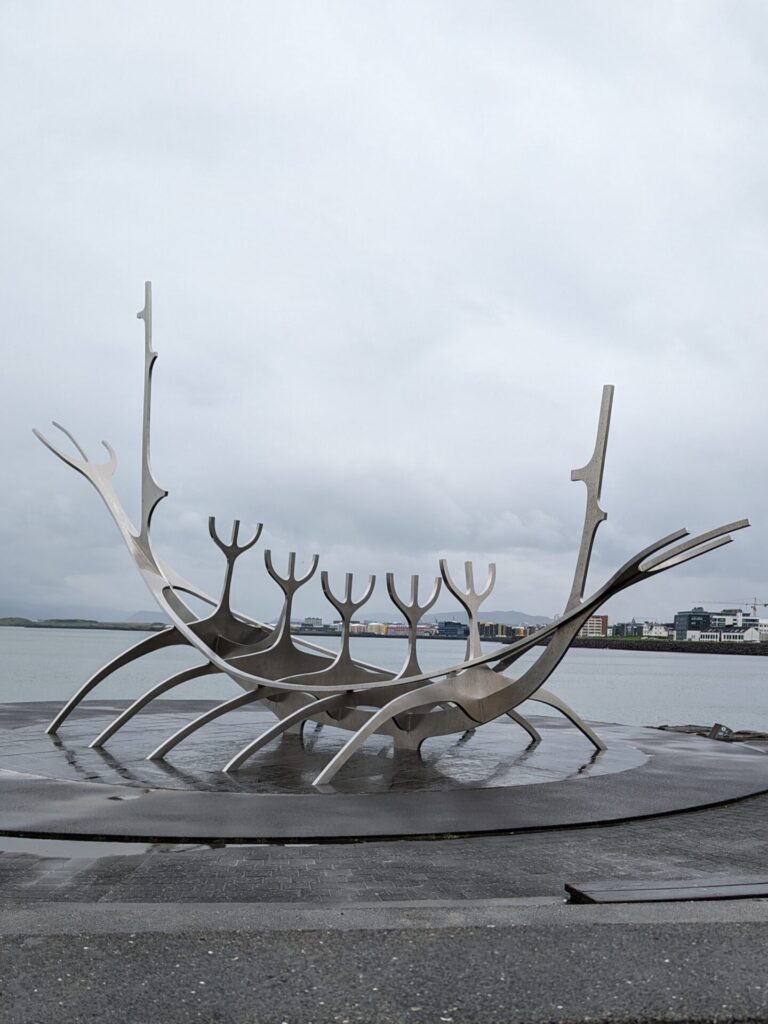
Blue Lagoon
The Blue Lagoon is Iceland’s most famous geothermal spa. It’s located in the Reykjanes peninsula, only 20 minutes from the airport. At the lagoon, you can relax and enjoy the blue geothermal pools, mud masks, and saunas. It’s the perfect way to end your trip to Iceland. Make a timeslot reservation in advance if you plan to visit; timeslots can sell out!
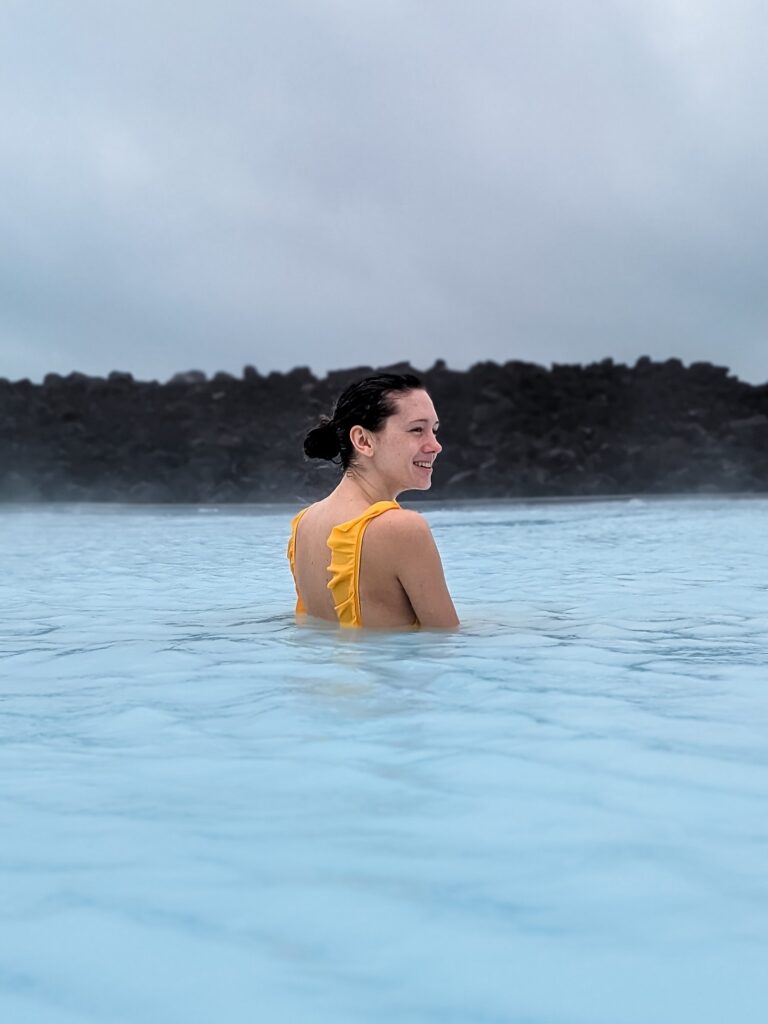
Reykjanes Lighthouse
Reykjanes Lighthouse is the oldest lighthouse in Iceland, located right next to the Gunnuhver Hot Springs. The lighthouse has undergone many renovations over its long life, but to this day, it’s a great area for hiking and birdwatching. The nearby cliffs are also a great area to explore Iceland’s unique geological features.
If you visit in the winter, this is a great spot to see the northern lights!
Gunnuhver Hot Springs
The Reykjanes Peninsula is a very active geothermal area, making the Gunnuhver Hot Springs one of the best places to visit and see a vibrant display of hot springs, mud pools, and steam vents. There are many viewing platforms and paths around the area for safe viewing.
The name of this hot spring originated from a ghost story about a witch, Gunna, who was drowned in the hot springs.
Bridge Between Continents
The bridge itself is more symbolic and does not technically span between the North American and Eurasian tectonic plates, but it’s still a fun stop and a great place to learn about Iceland’s geology.
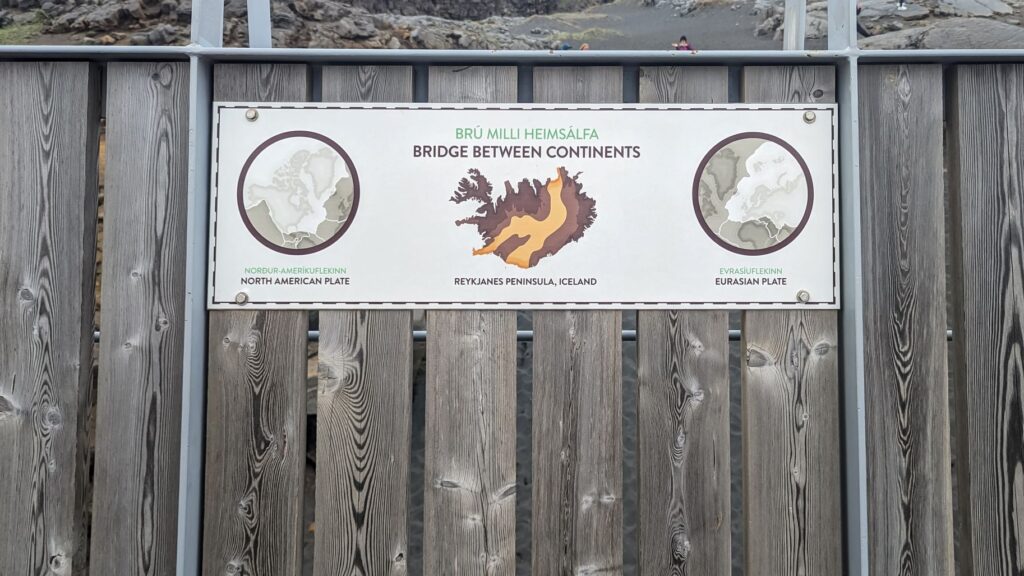
Not sure what to pack for your Iceland trip? Check out my
Iceland Summer Packing Guide
What if you want to go more off the beaten path?
If you don’t want to visit the typical tourist routes through the Golden Circle and South Coast, head up into the Snæfellsnes Peninsula and then into the West Fjords! Your 3-day trip can consist of –
Day 1: Snaefellsnes Peninsula
Day 2: West Fjords
Day 3: Reykjavik/Reykjanes peninsula
Your home base is the Snaefellsnes Peninsula, which will give you the perfect launch point for Day 2 of your off-the-beaten-path adventure!
Where to stay in Iceland
Where to Stay in Reykjavik
Reykjavik, the capital of Iceland, has a lot of choices for places to stay; these are just a few options.
Where to Stay in Near Hella
Hella is a good place to stay the night between the Golden Circle and South Coast. It’s a small town with a few accommodation choices, but there are also guesthouses located in the general area!
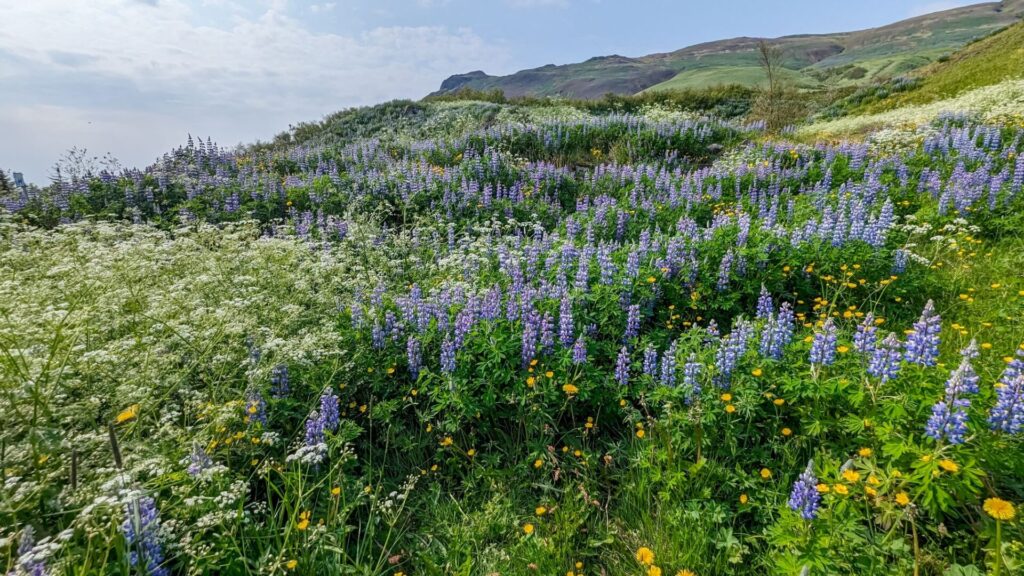
Where to eat in Iceland
Where to Eat in Reykjavik
There are so many places to eat in Reykjavik; you really can’t go wrong! Here are a few places I recommend.
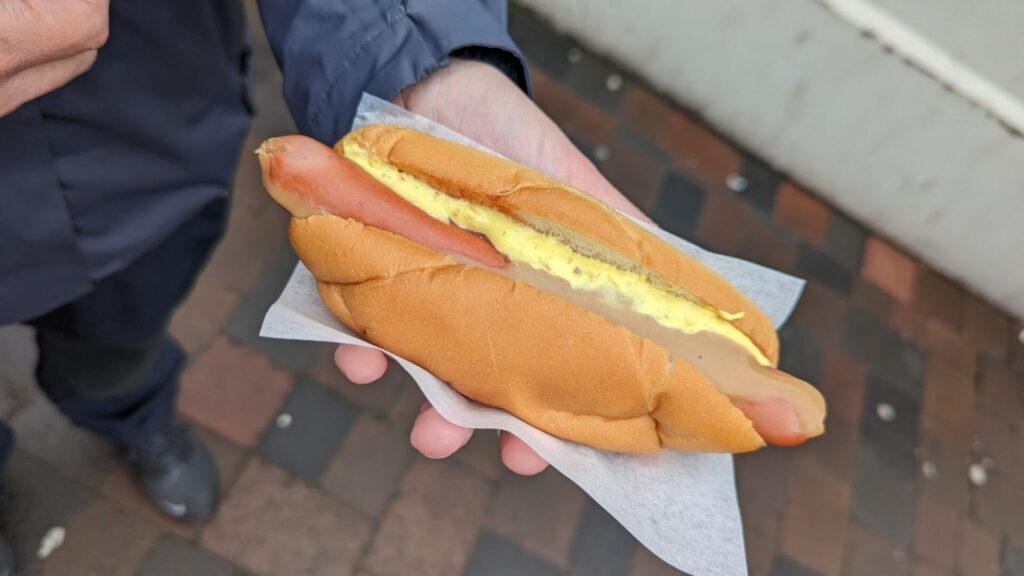
Where to Eat in the Golden Circle
Keep an eye out for places to eat while in the Golden Circle. You will most likely find restaurants at guesthouses or near popular tourist stops. Here are a few options:
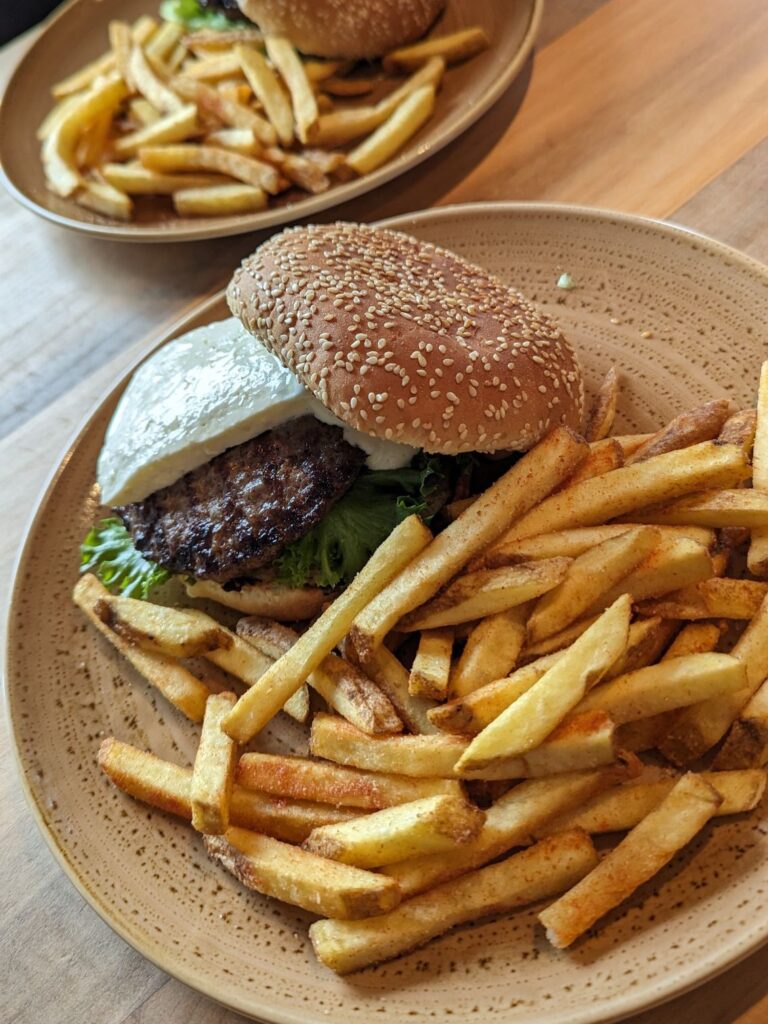
Where to Eat on the South Coast
Like the Golden Circle, most restaurants are near guesthouses or popular tourist stops. You will also find many restaurants in Vik, which is a great place to stop for lunch!

Where to Eat in the Snæfellsnes Peninsula
As you head away from the more typical tourist stops, food is fewer and farther between; you should be strategic about food while visiting the Snæfellsnes Peninsula. The tows of Arnarstapa and Grundarfjörður will have the most choices
